In 2023, the last two of the 248 pre-cast concrete girders were placed for the pergola section of the Conejo Viaduct. Ironworkers and carpenters are now working on the upper edge beams of the structure, the portion of the structure that provides support and ties the pre-cast concrete girders together. To date, more than 9,000 cubic yards of concrete have been placed to form the edge beams for the structure, with another 1,400 cubic yards still needing to be placed.
Conejo Viaduct
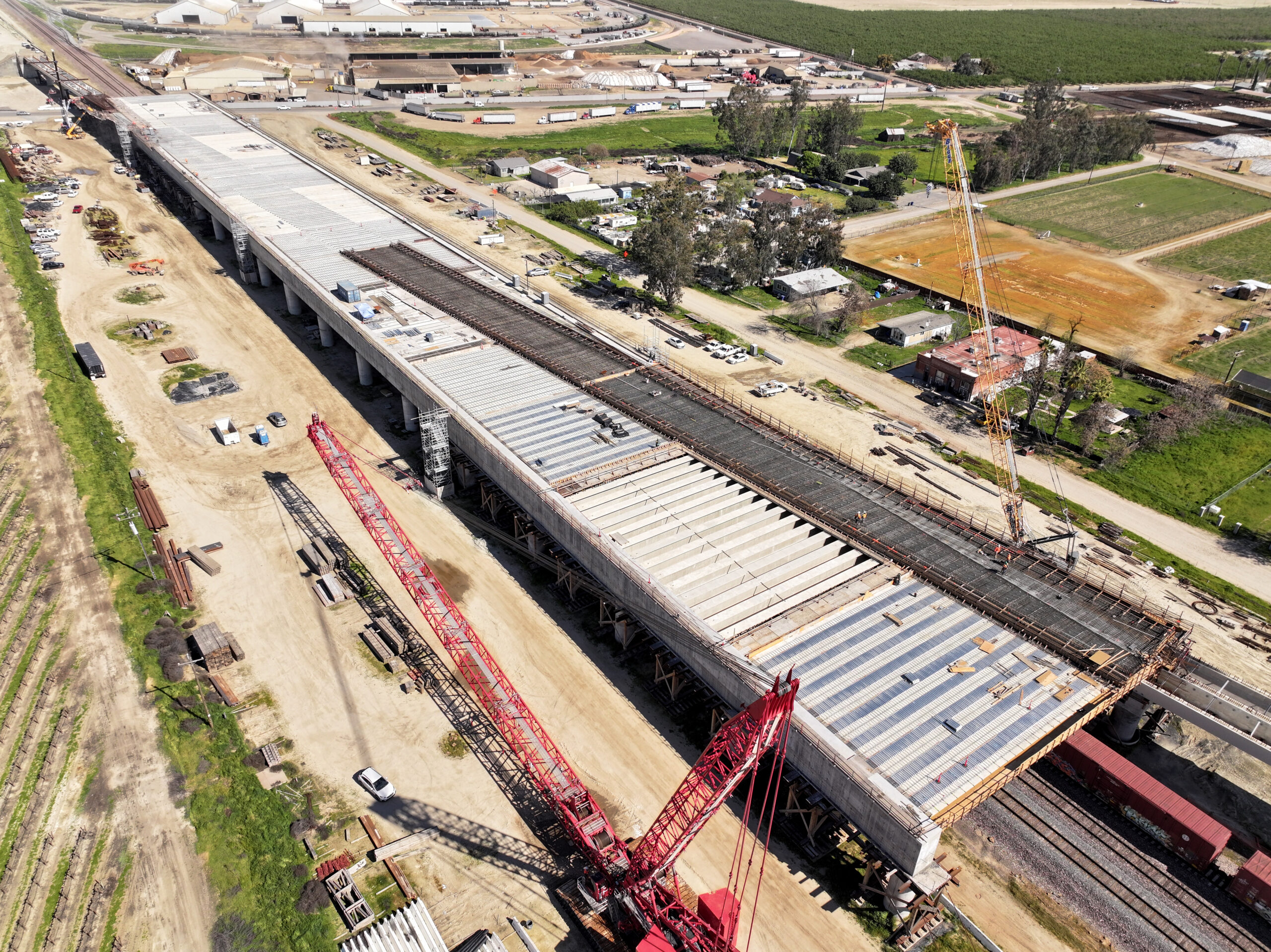
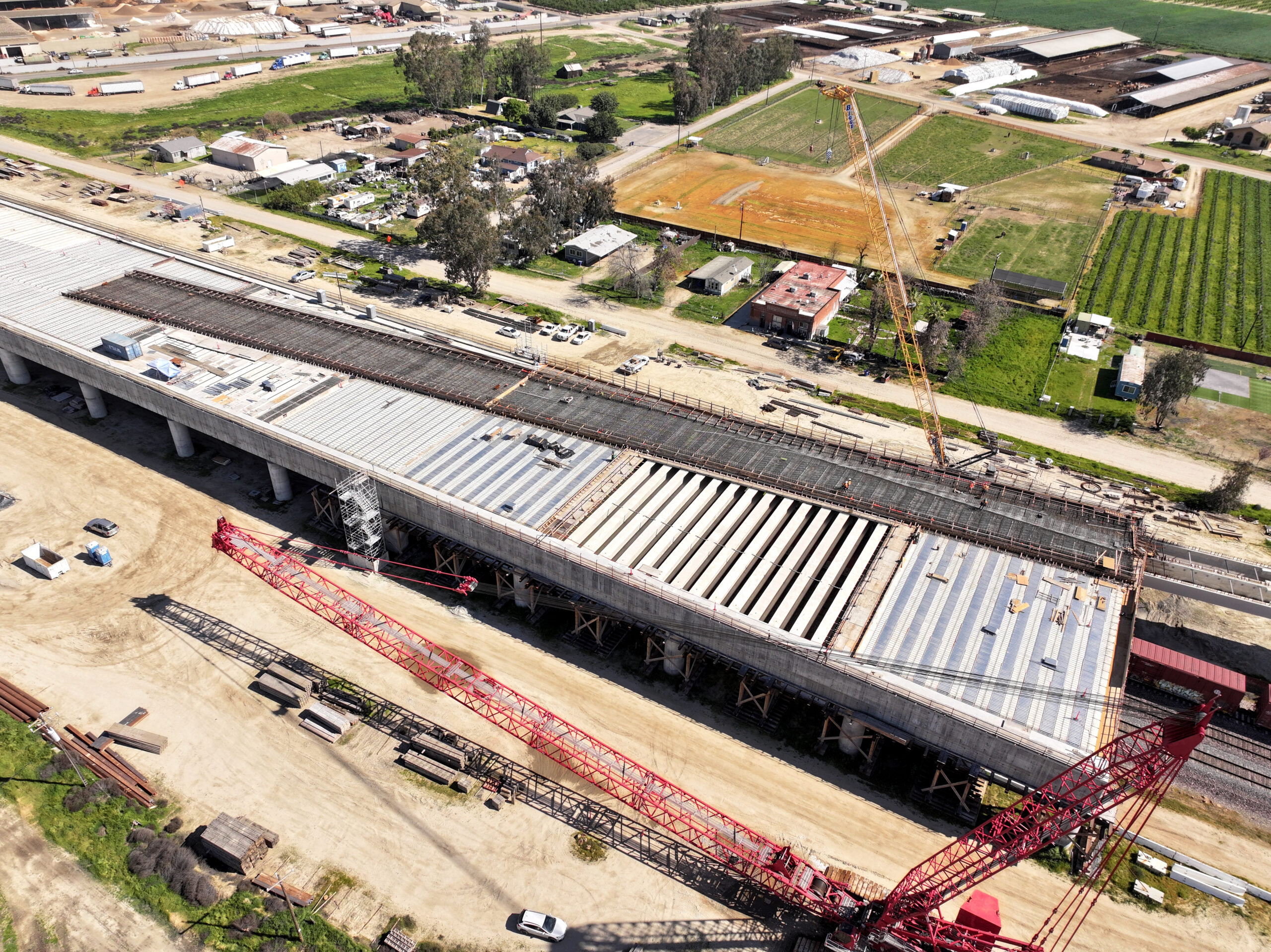
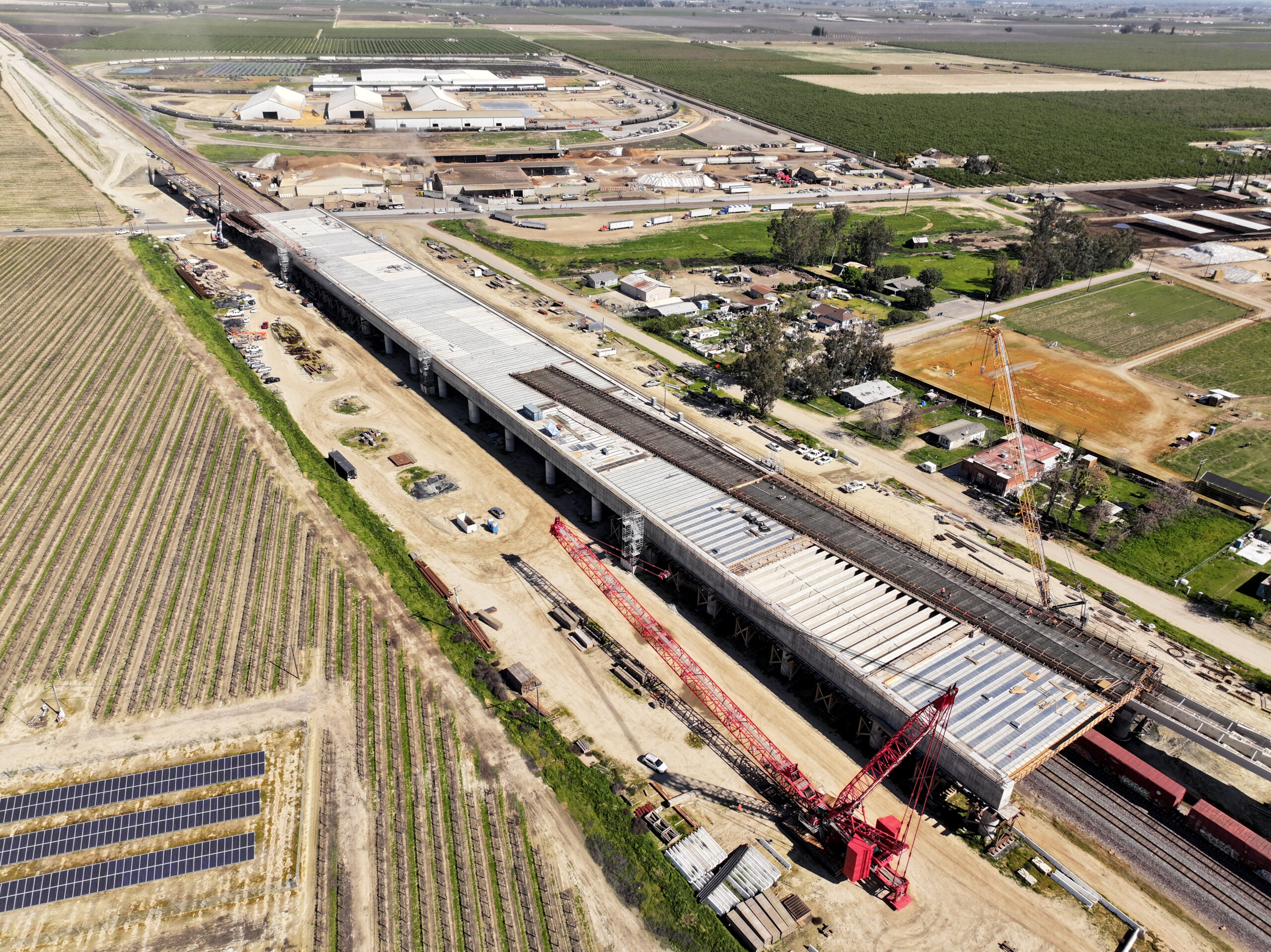
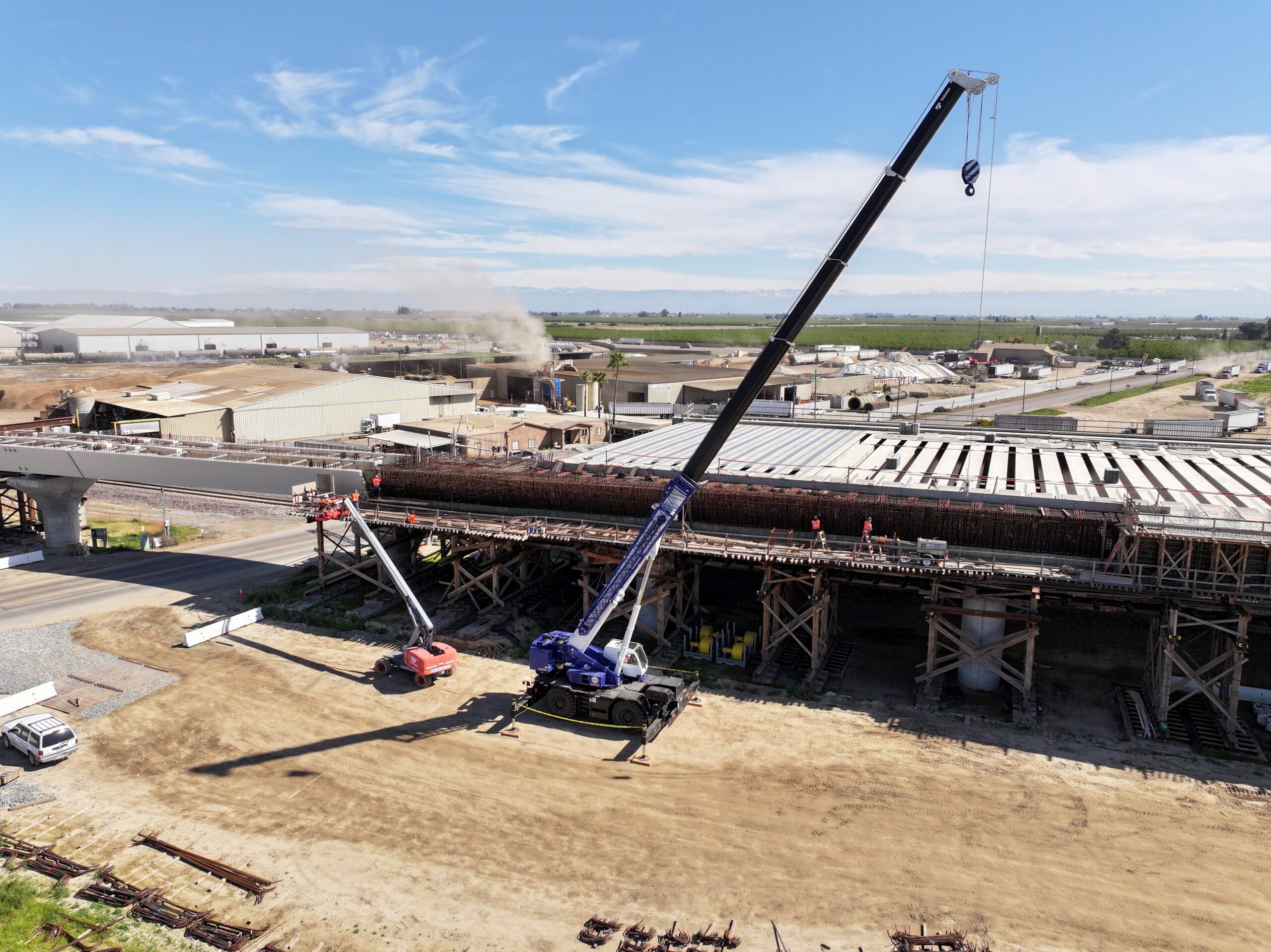
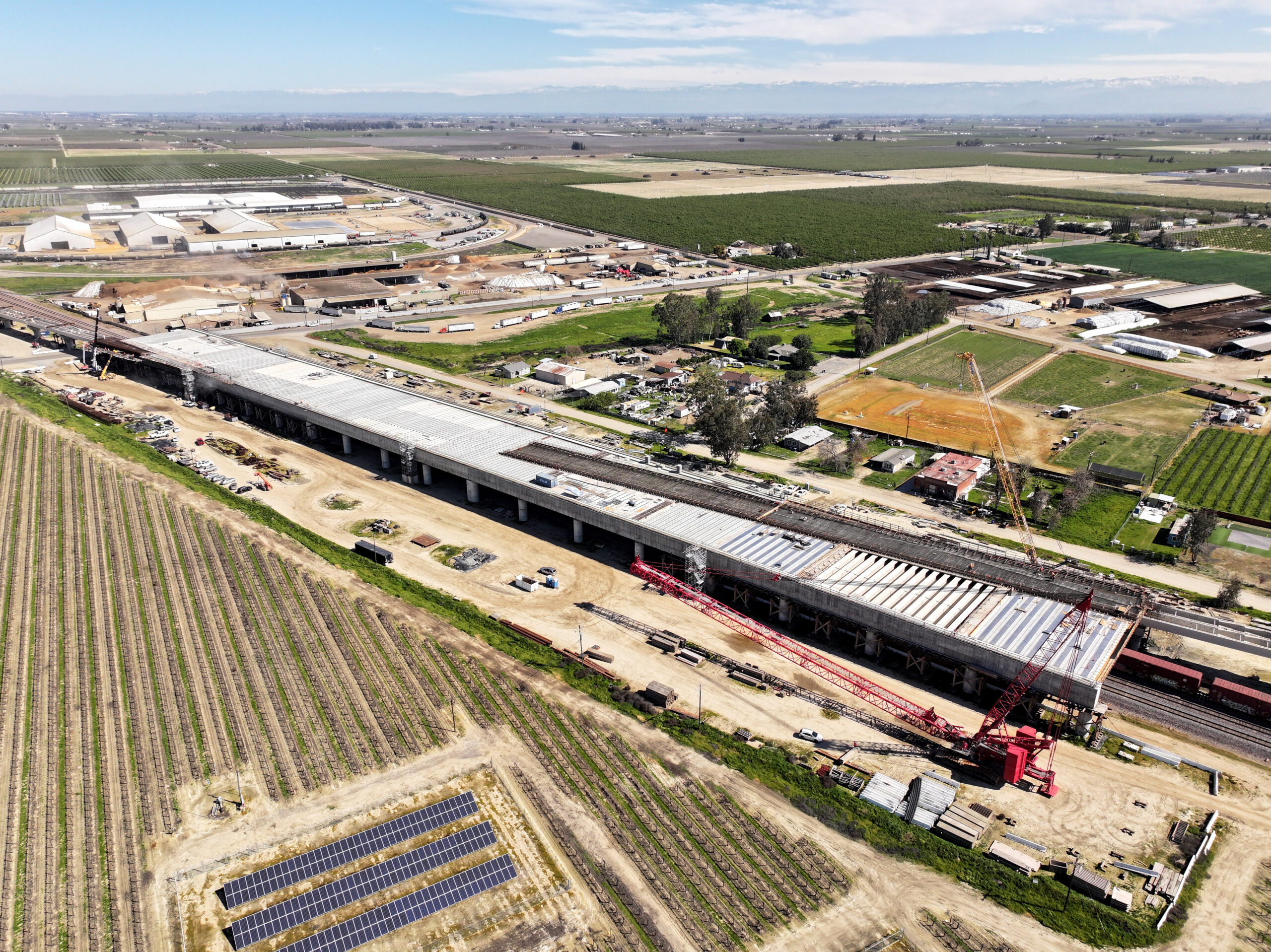
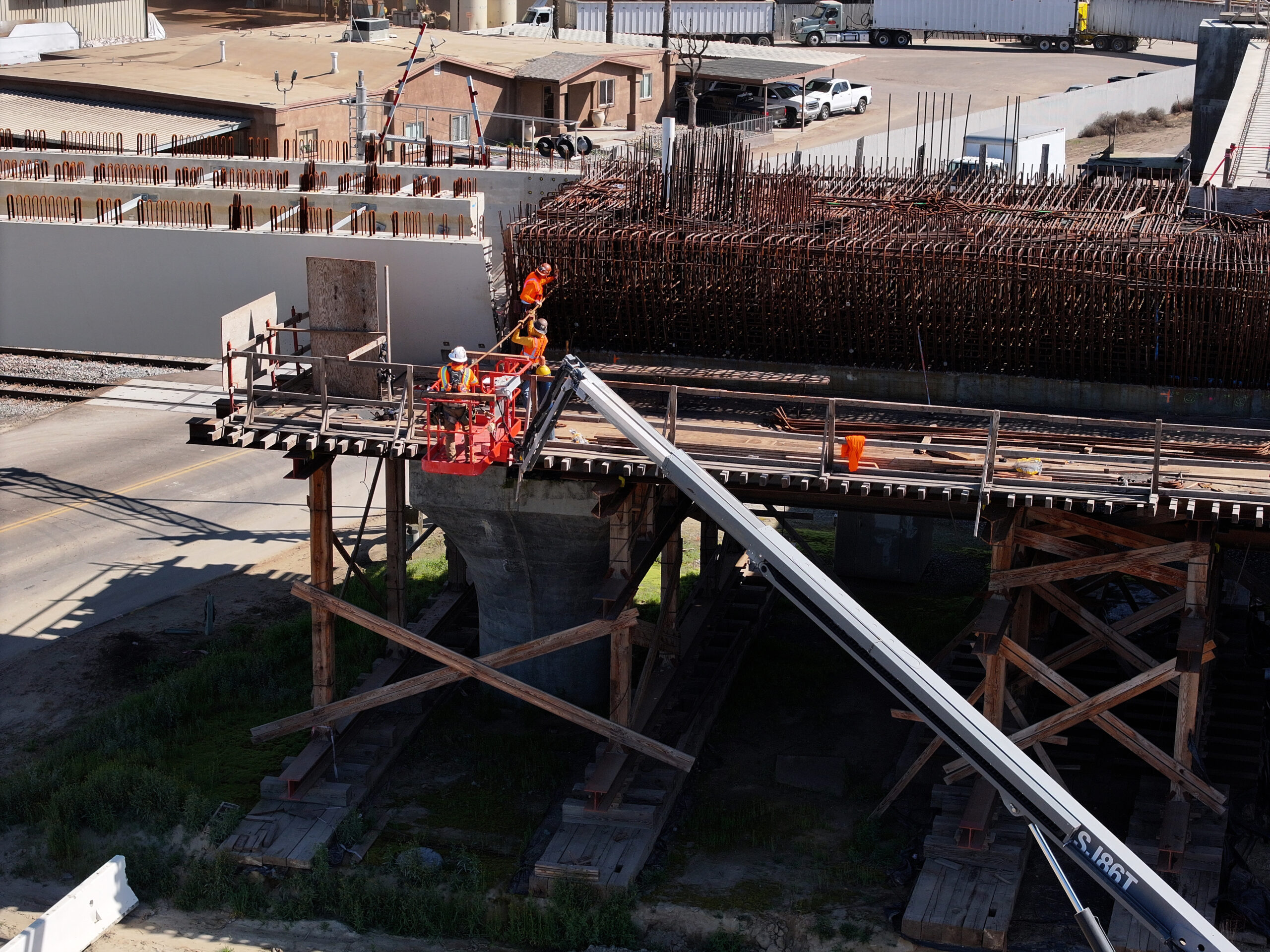
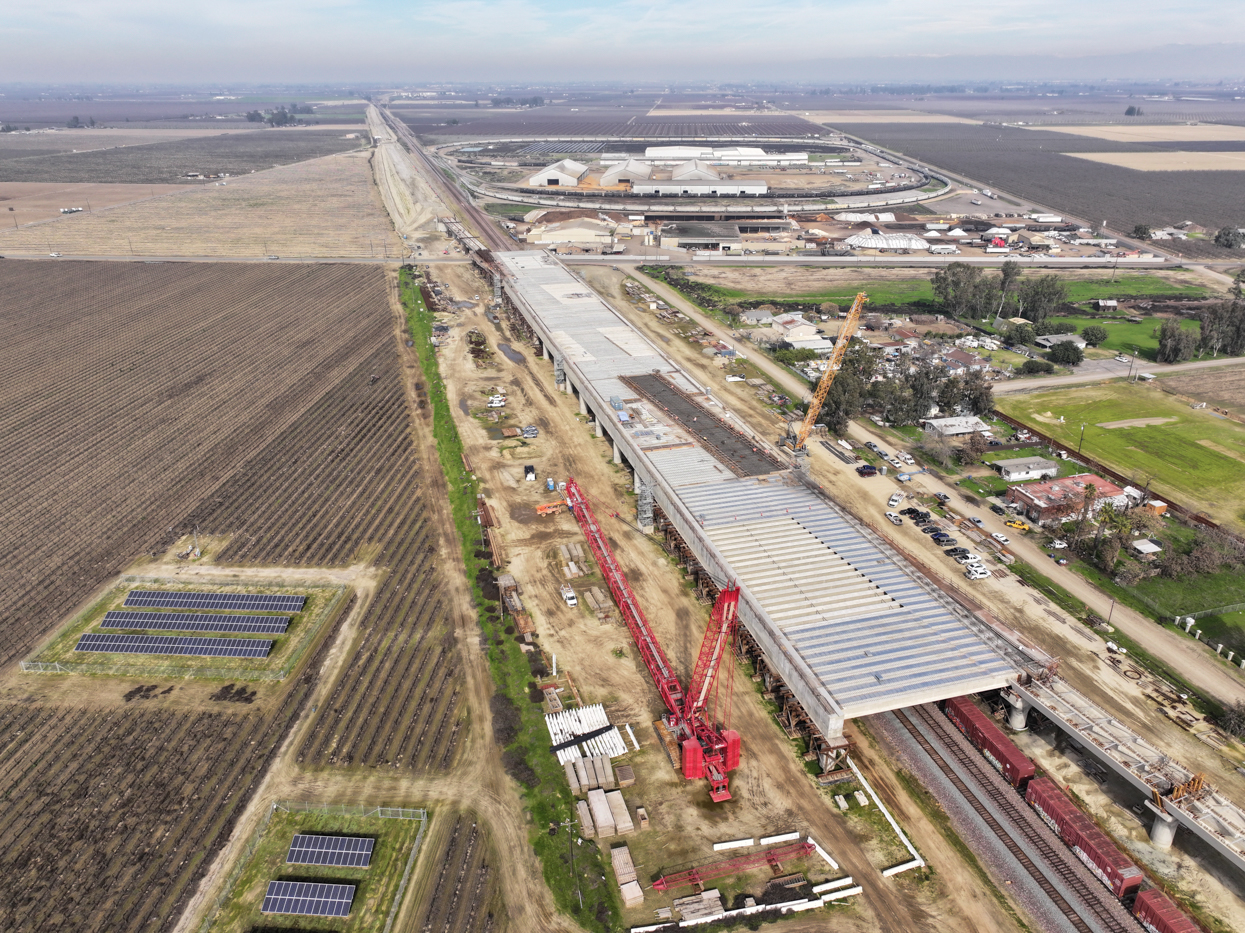
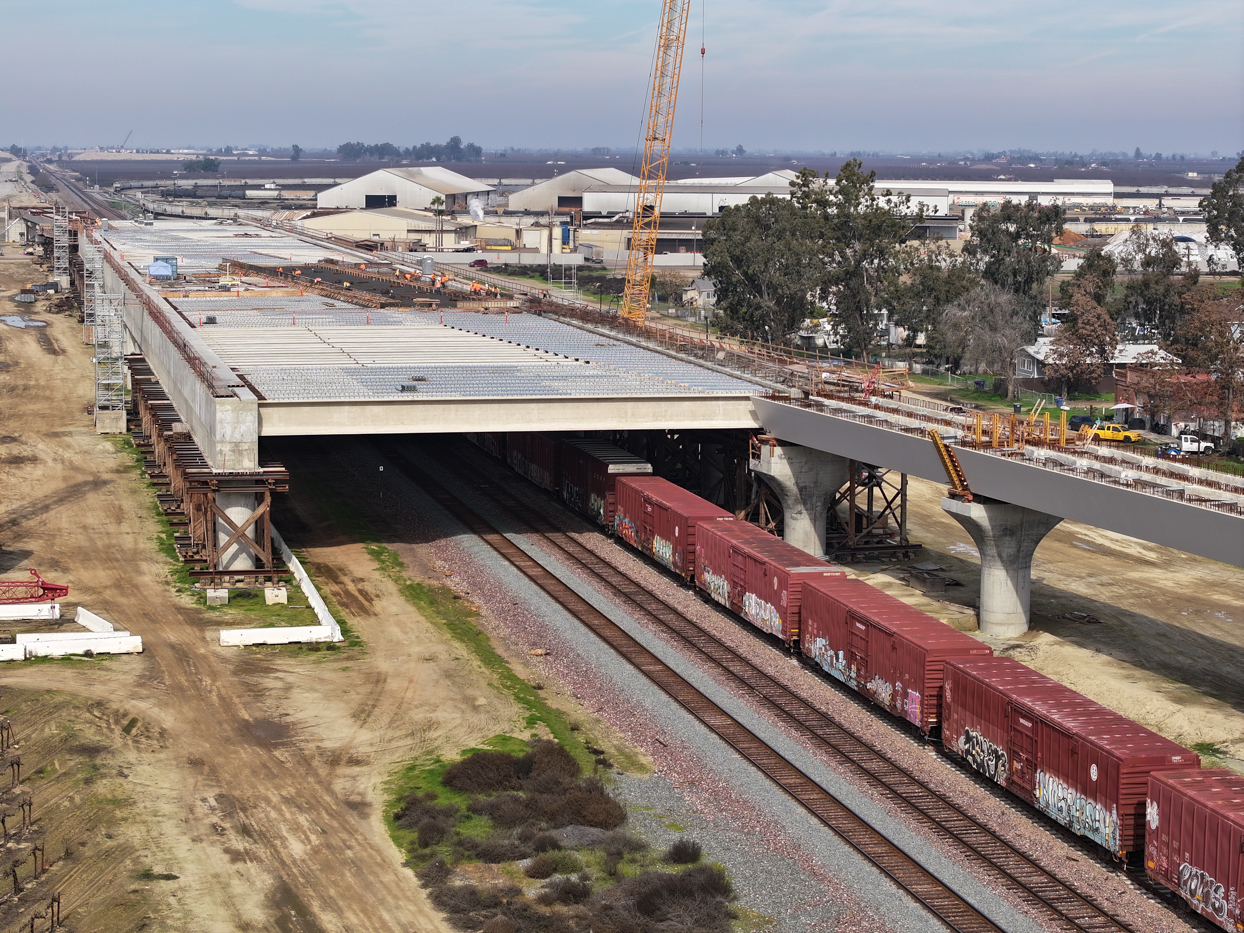
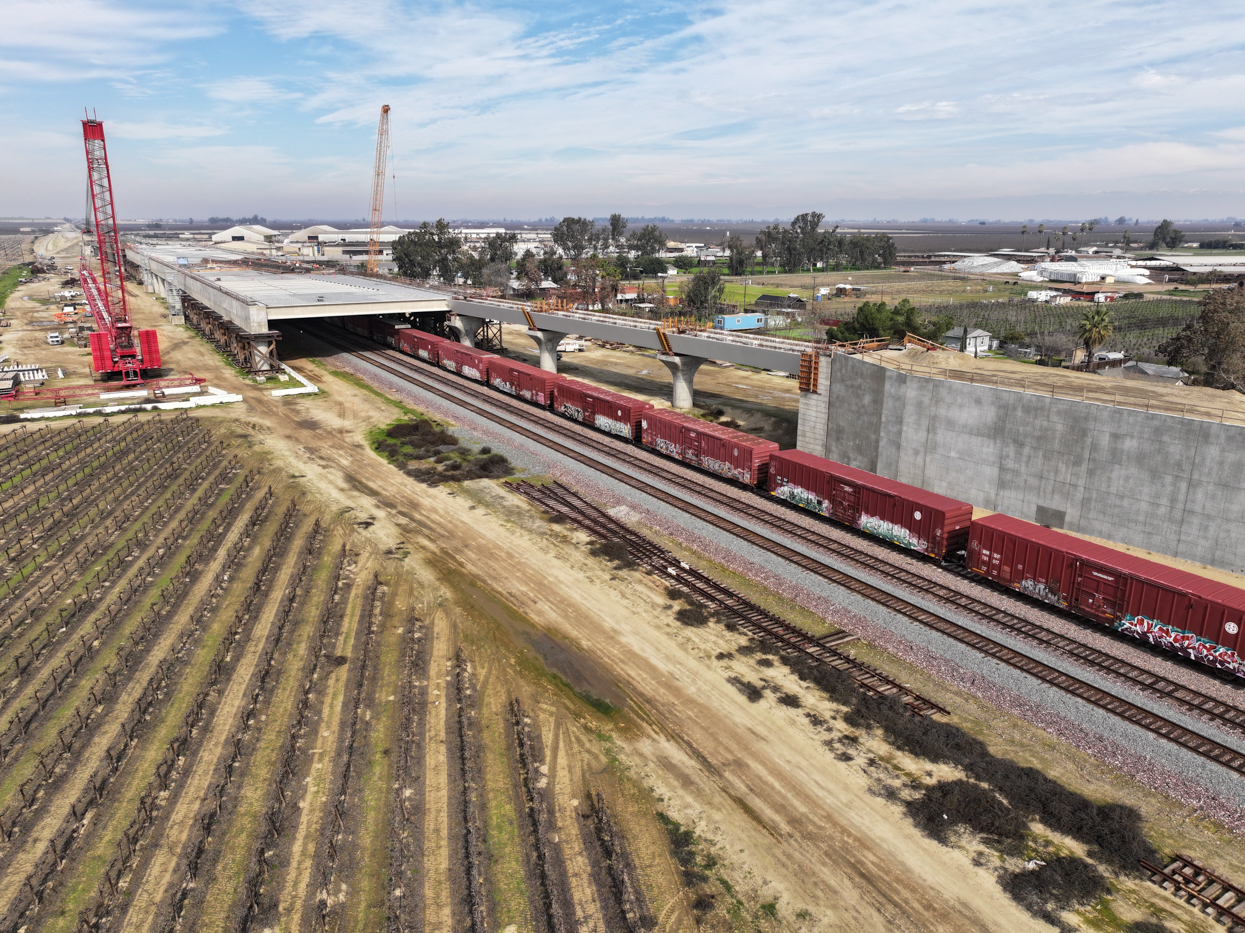
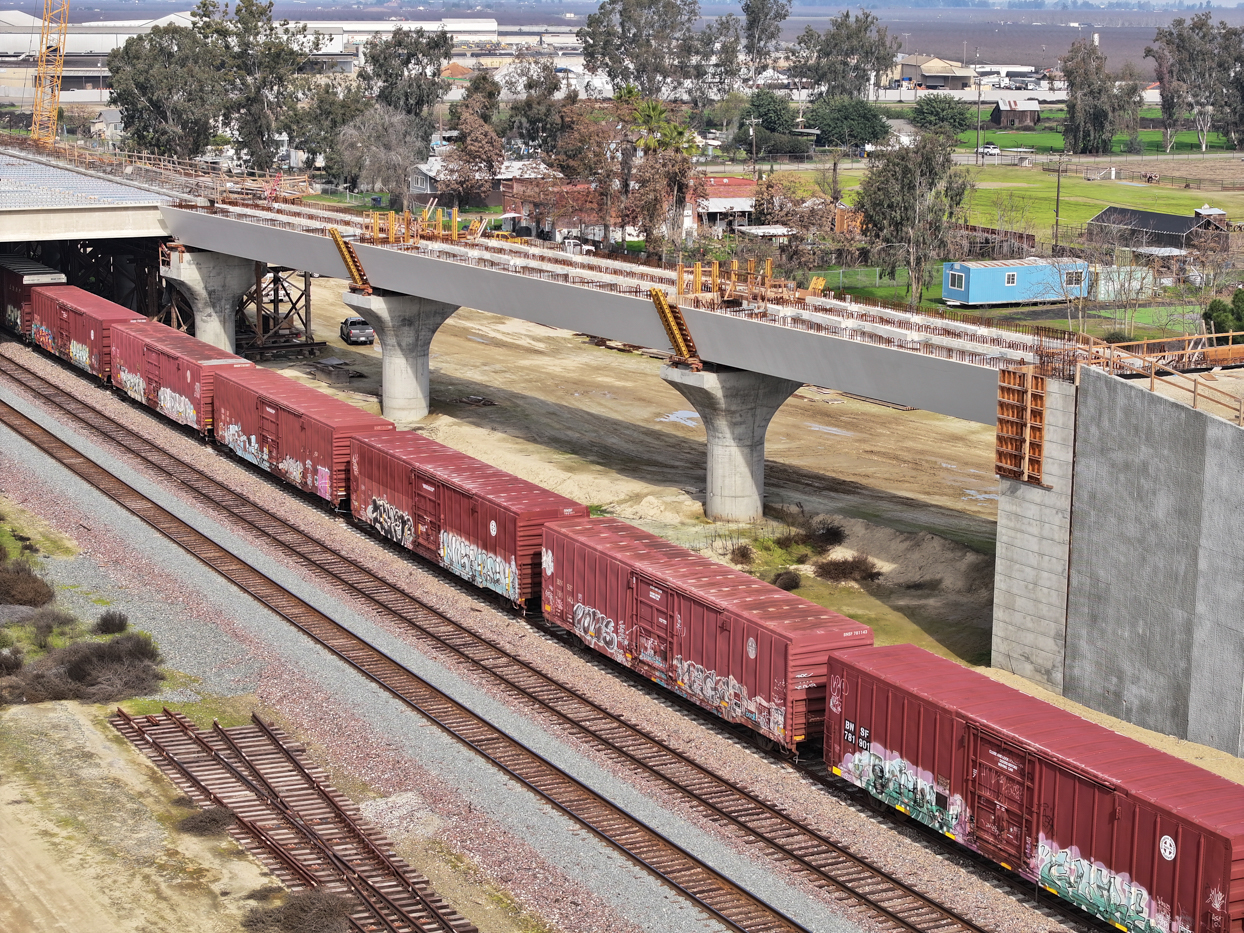
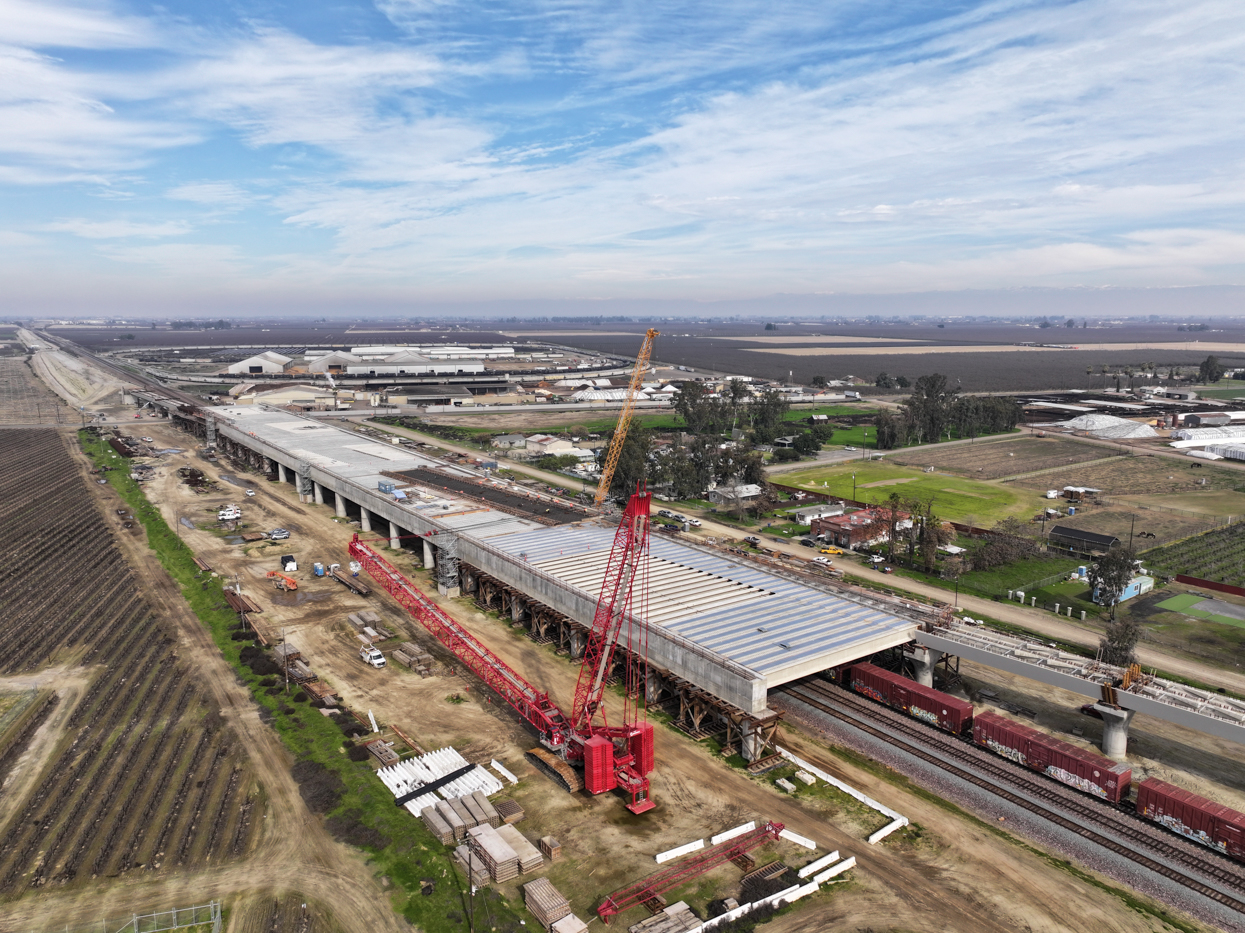
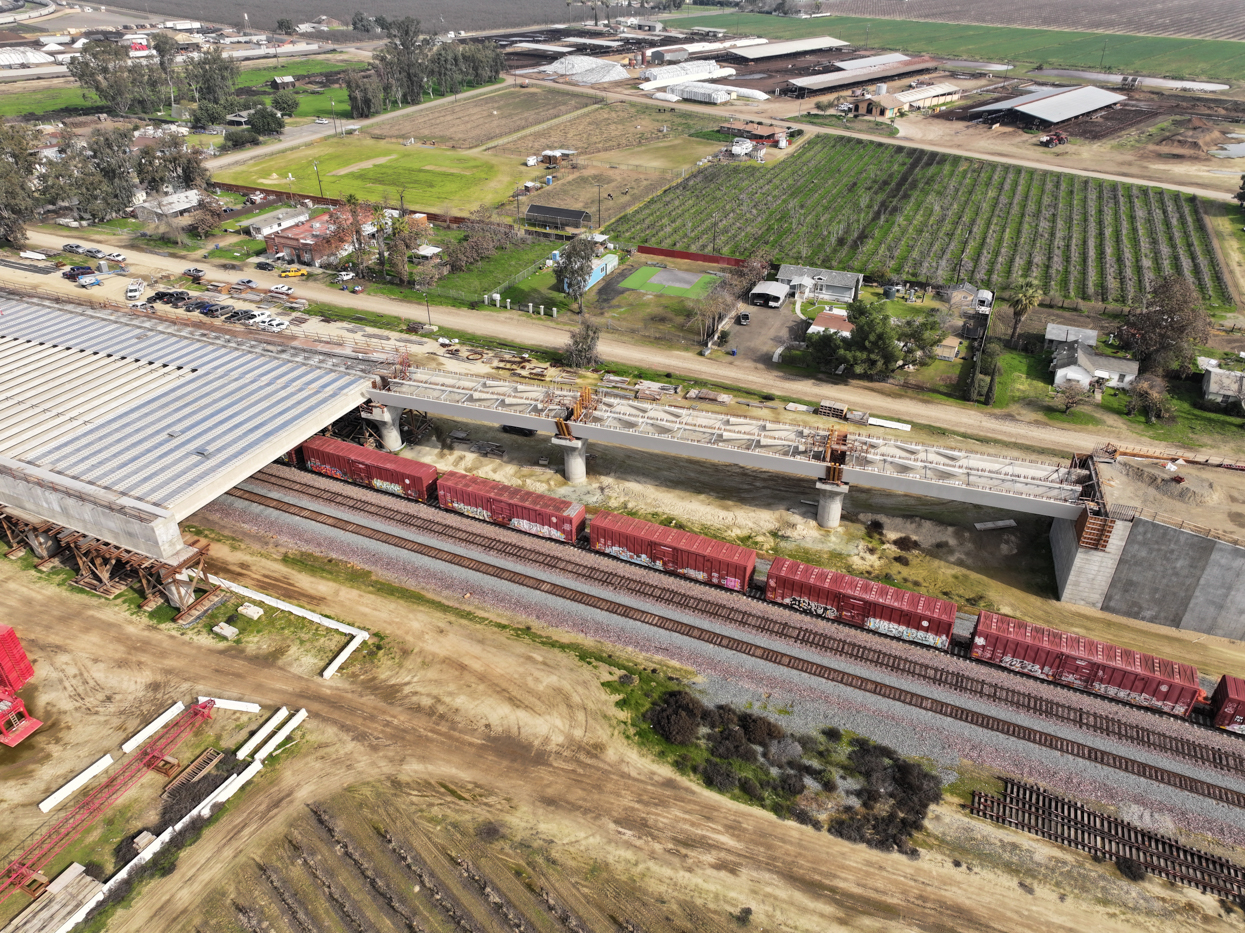
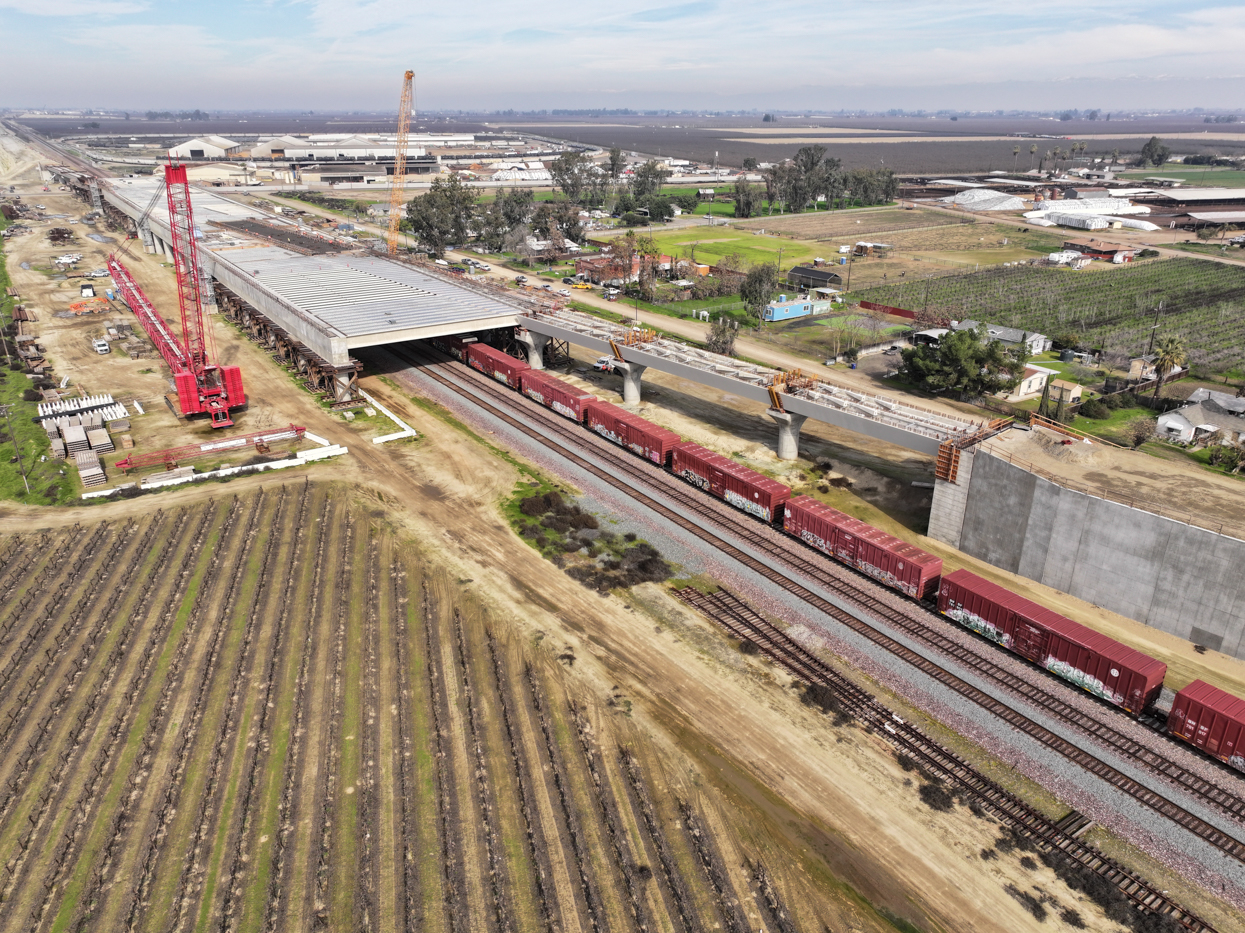
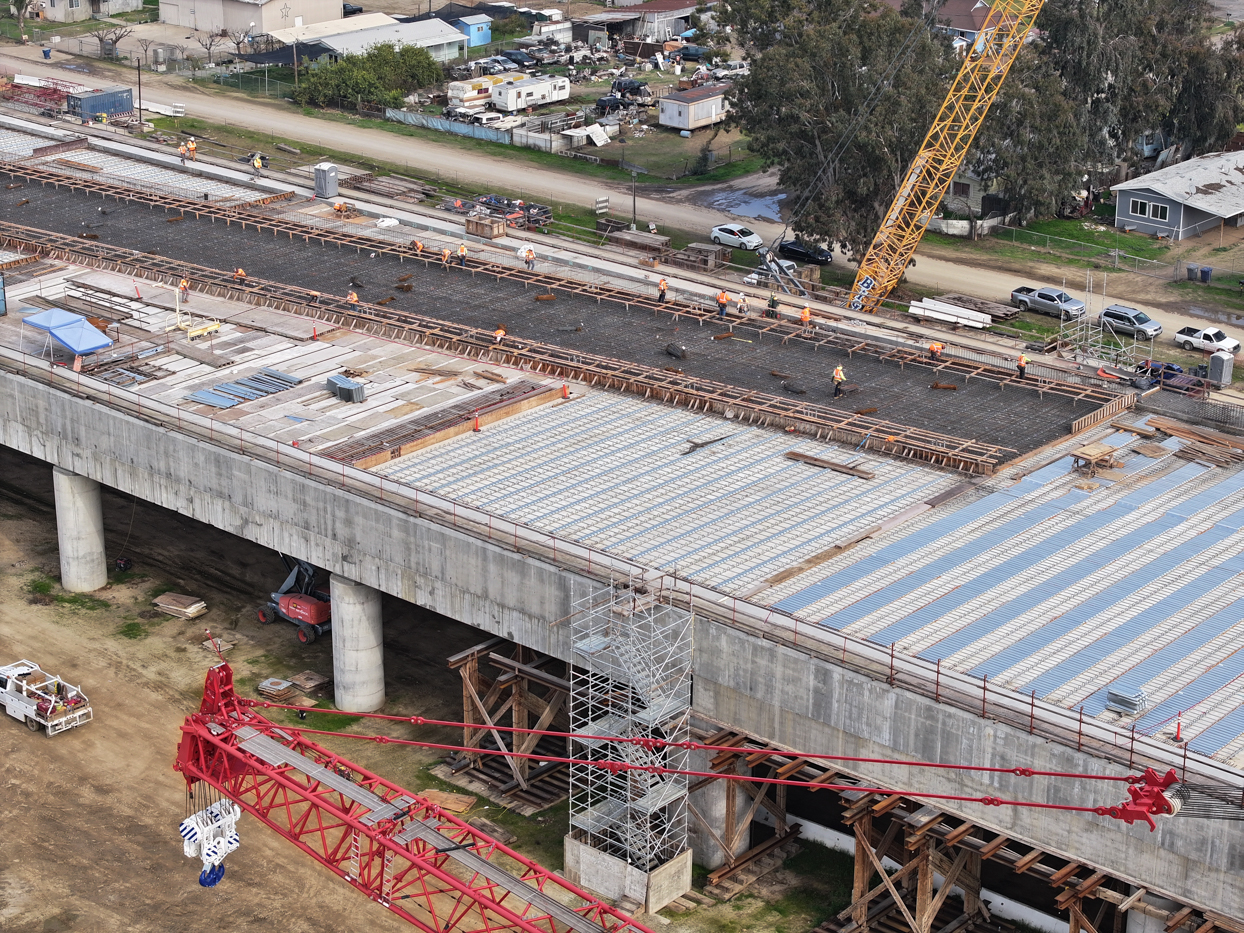
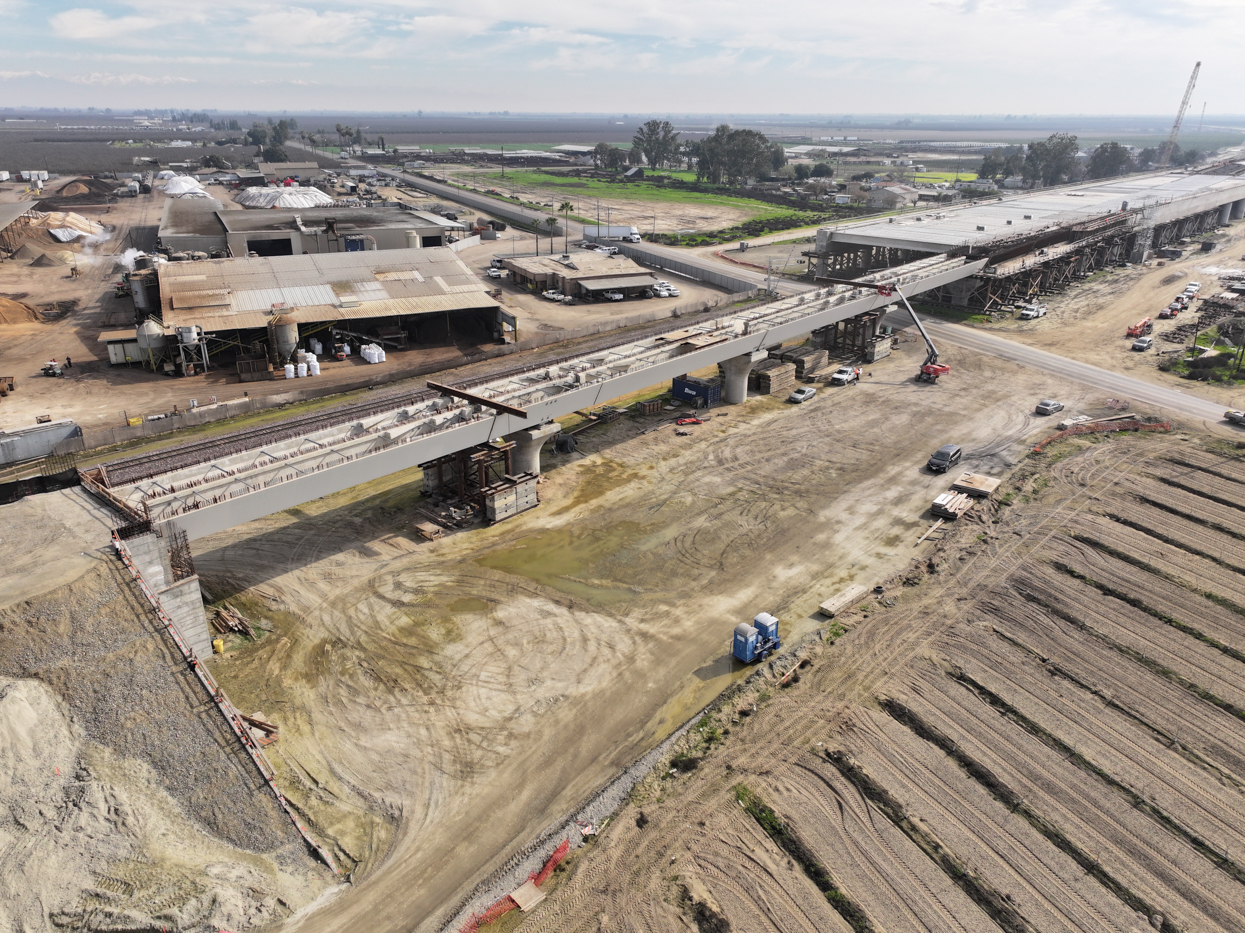
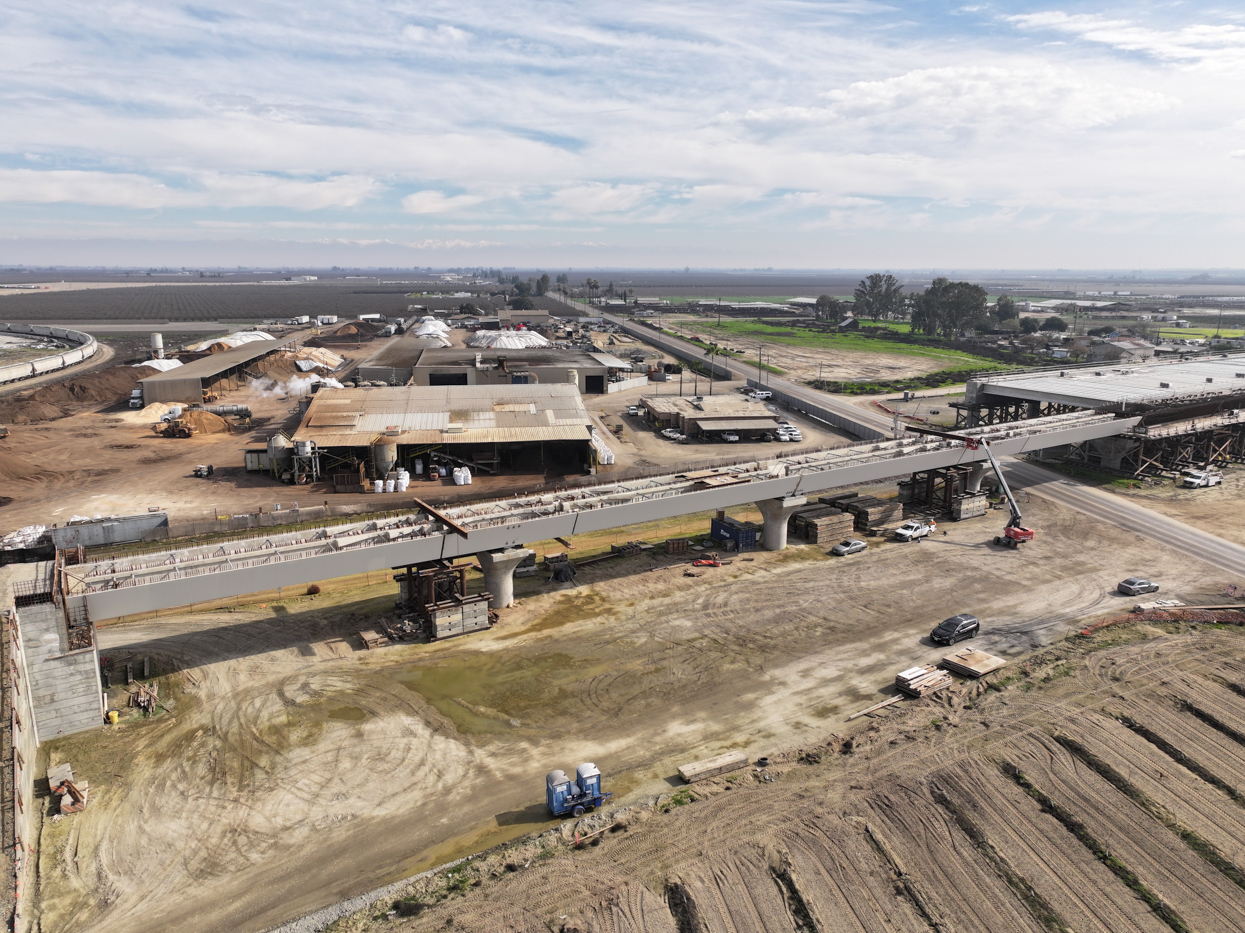
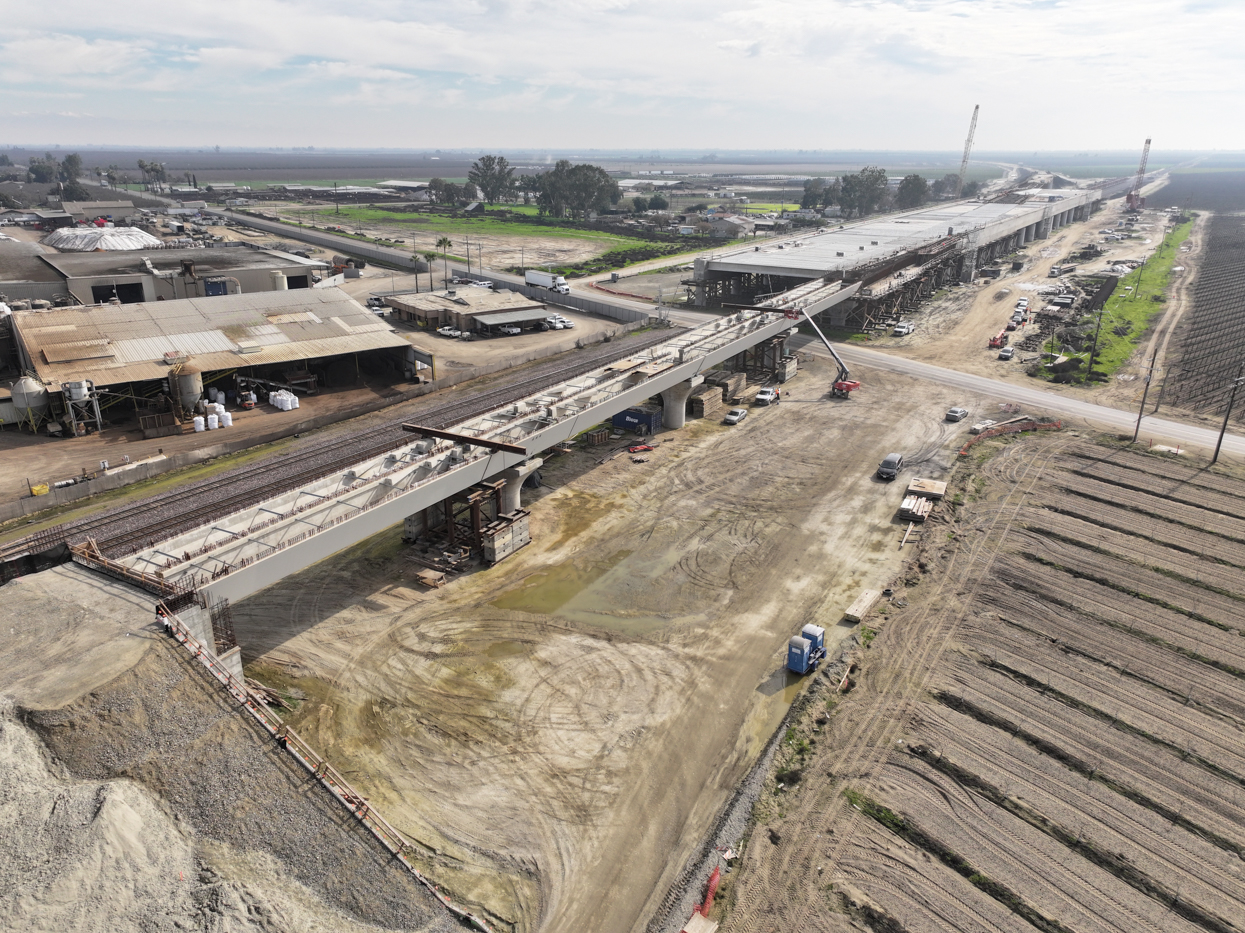
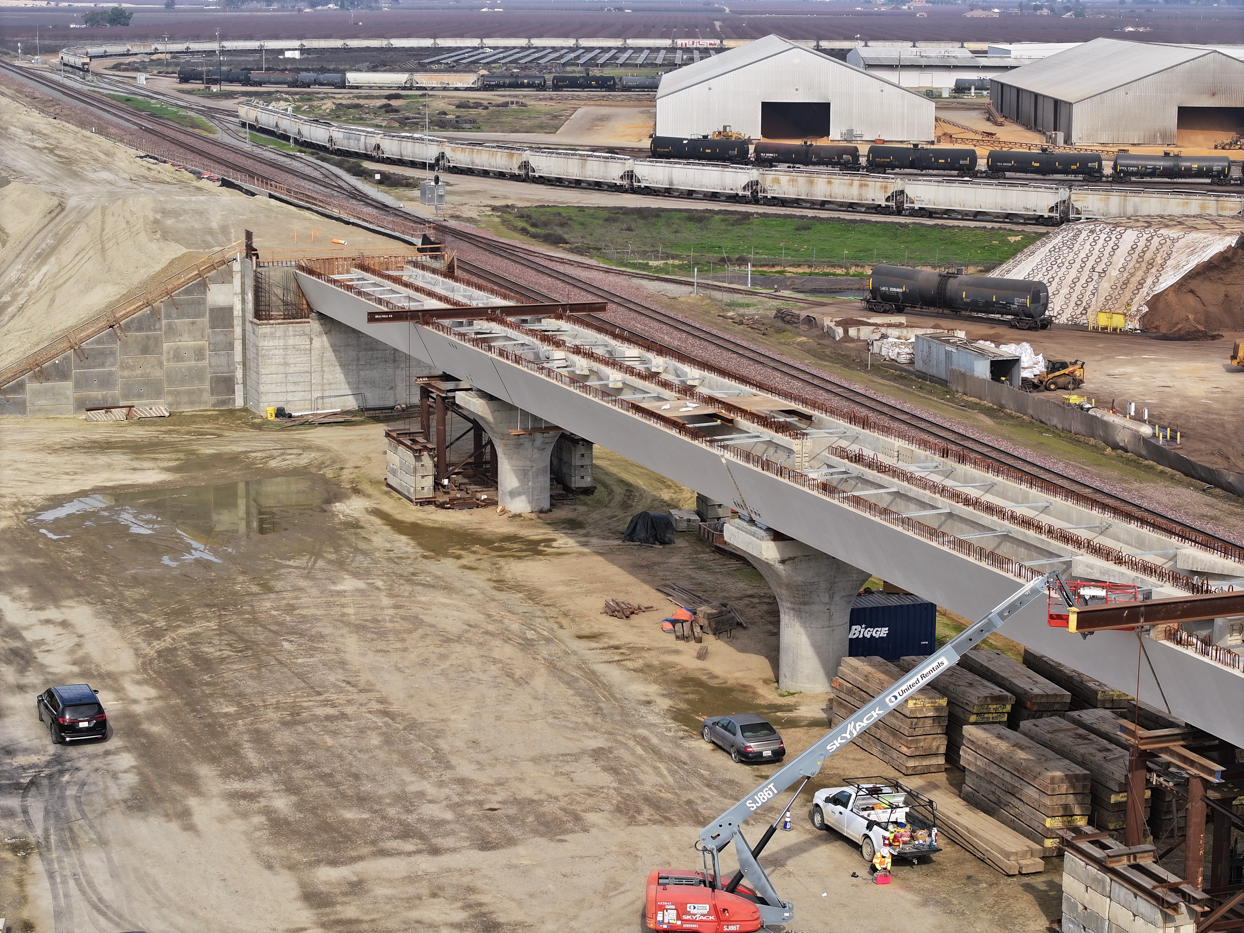
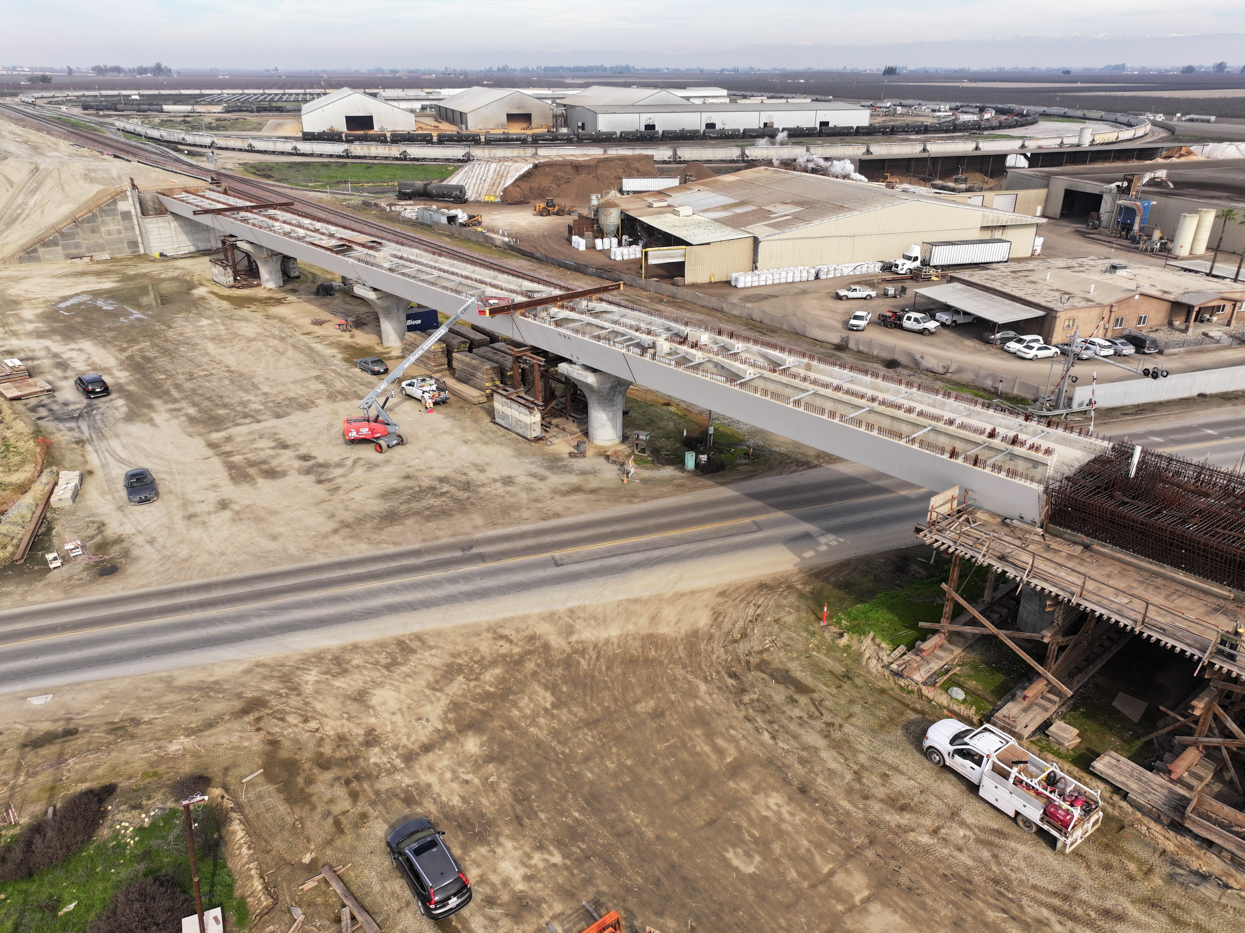
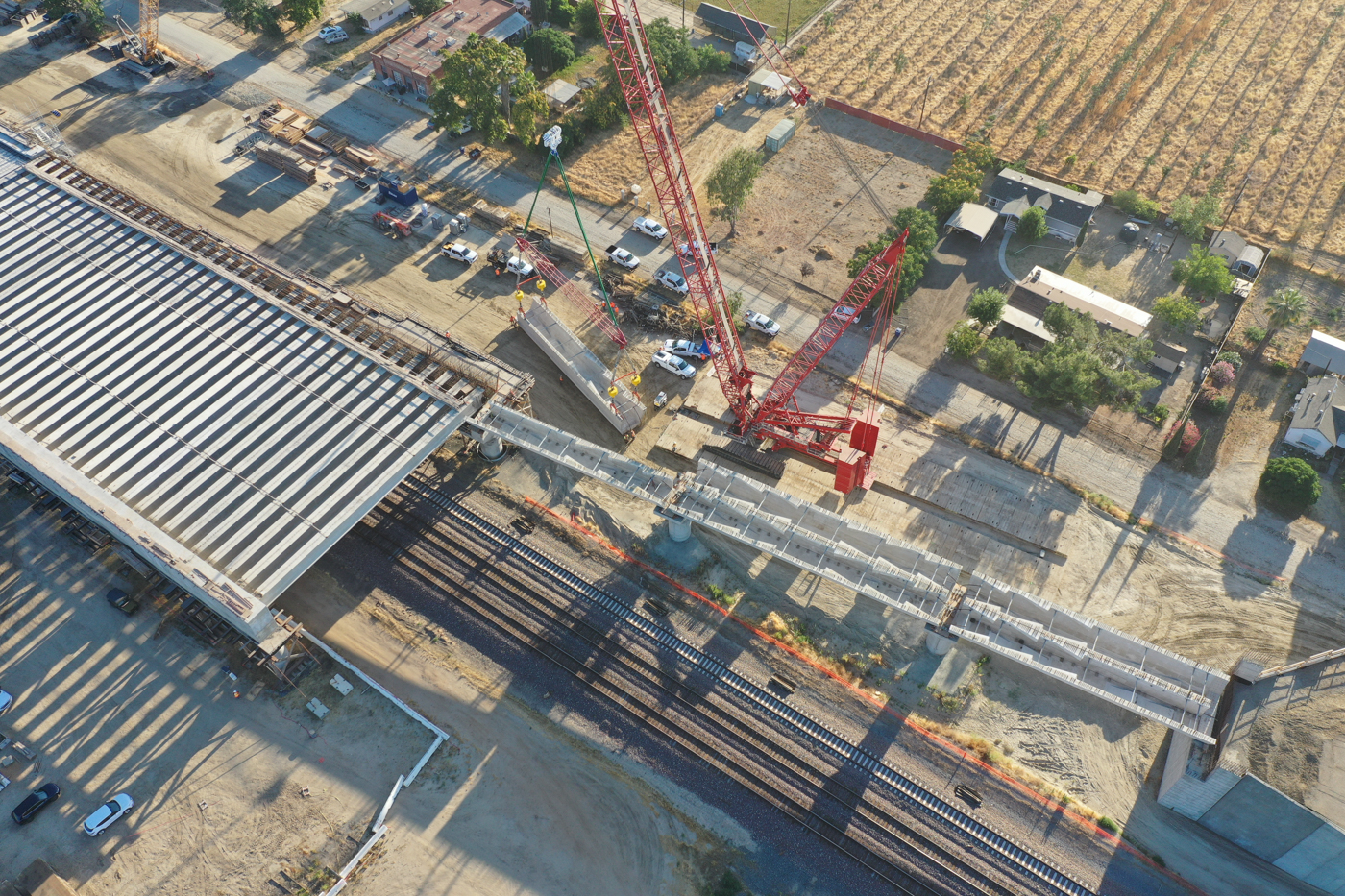
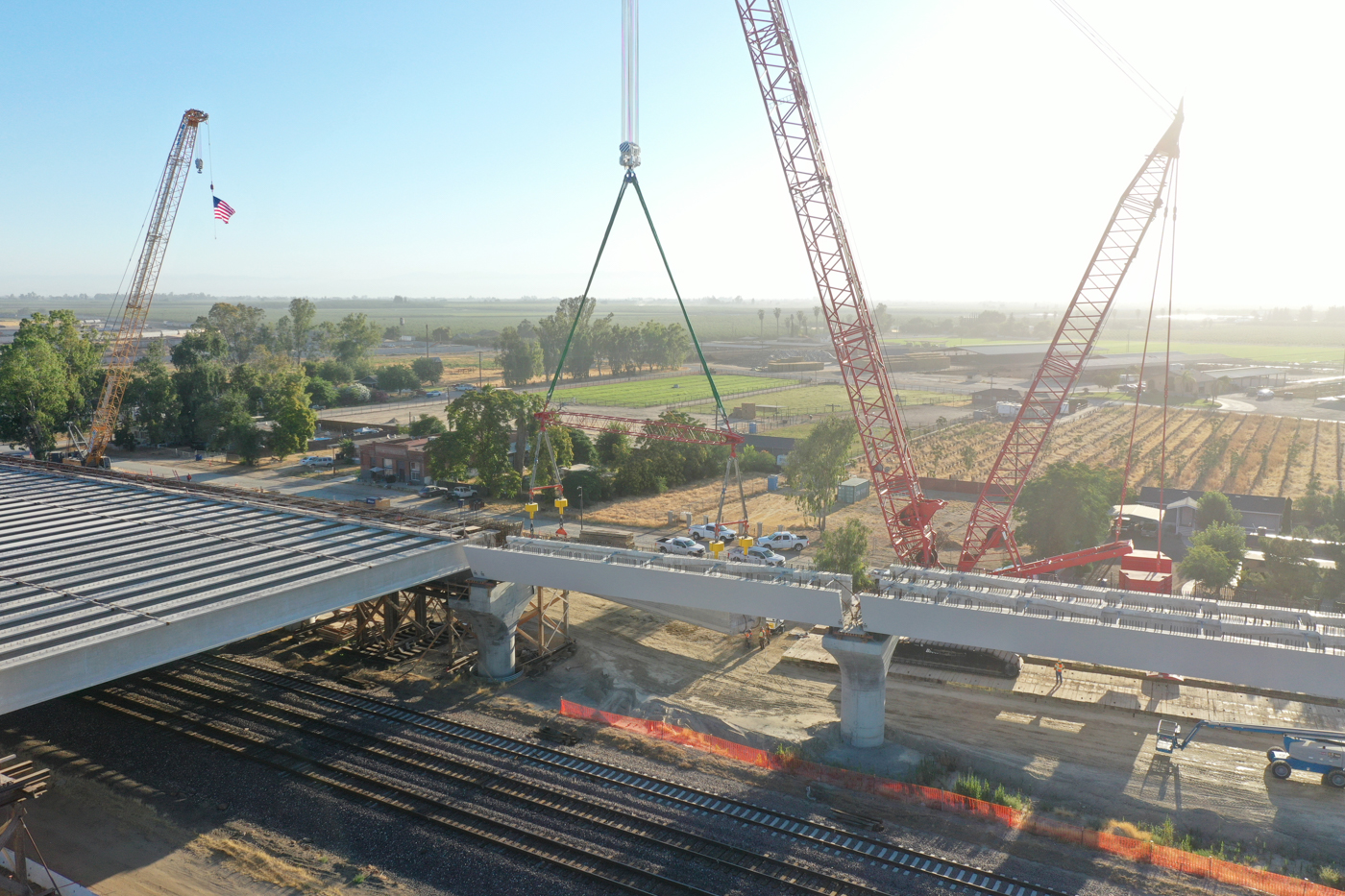
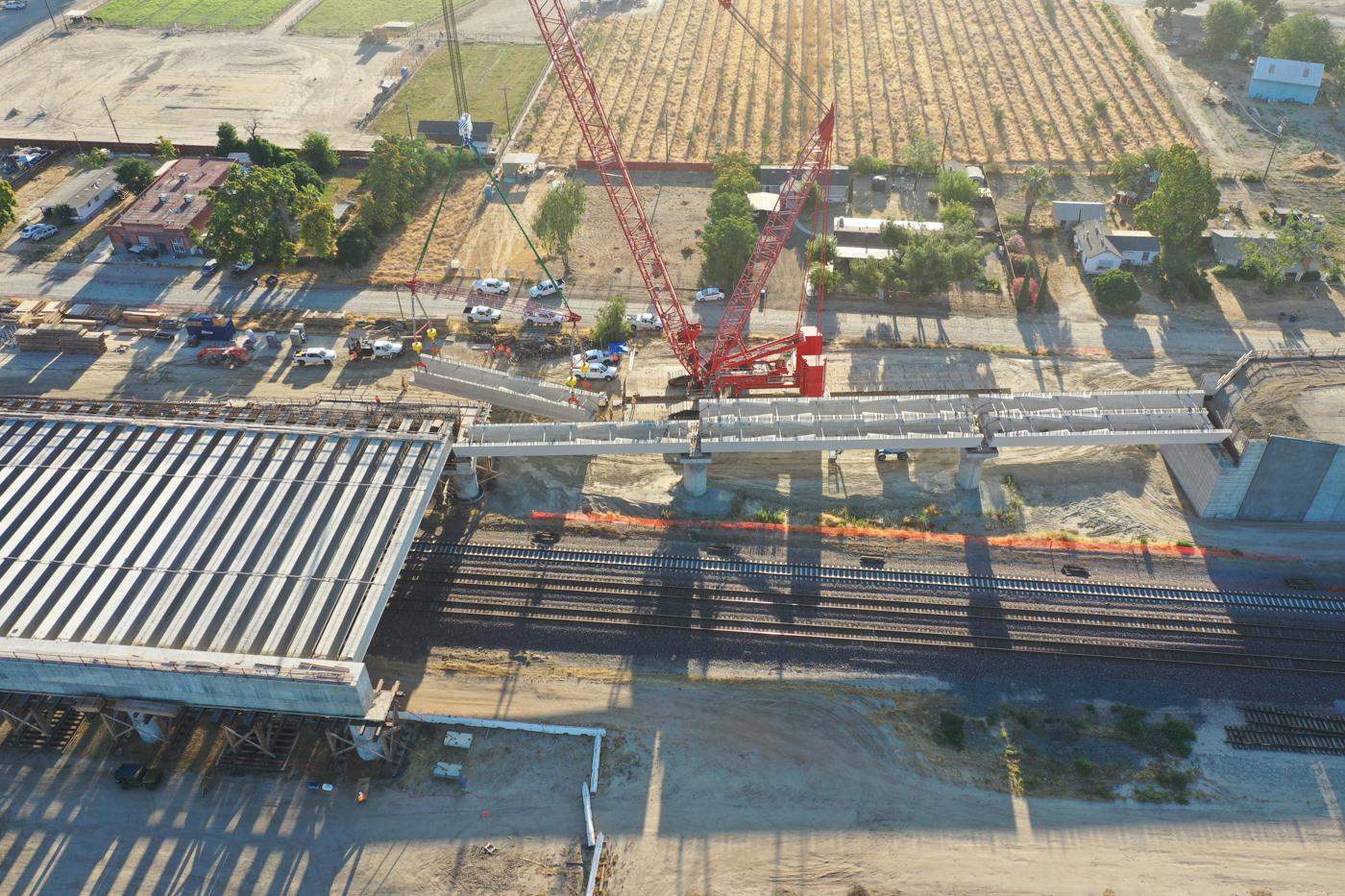
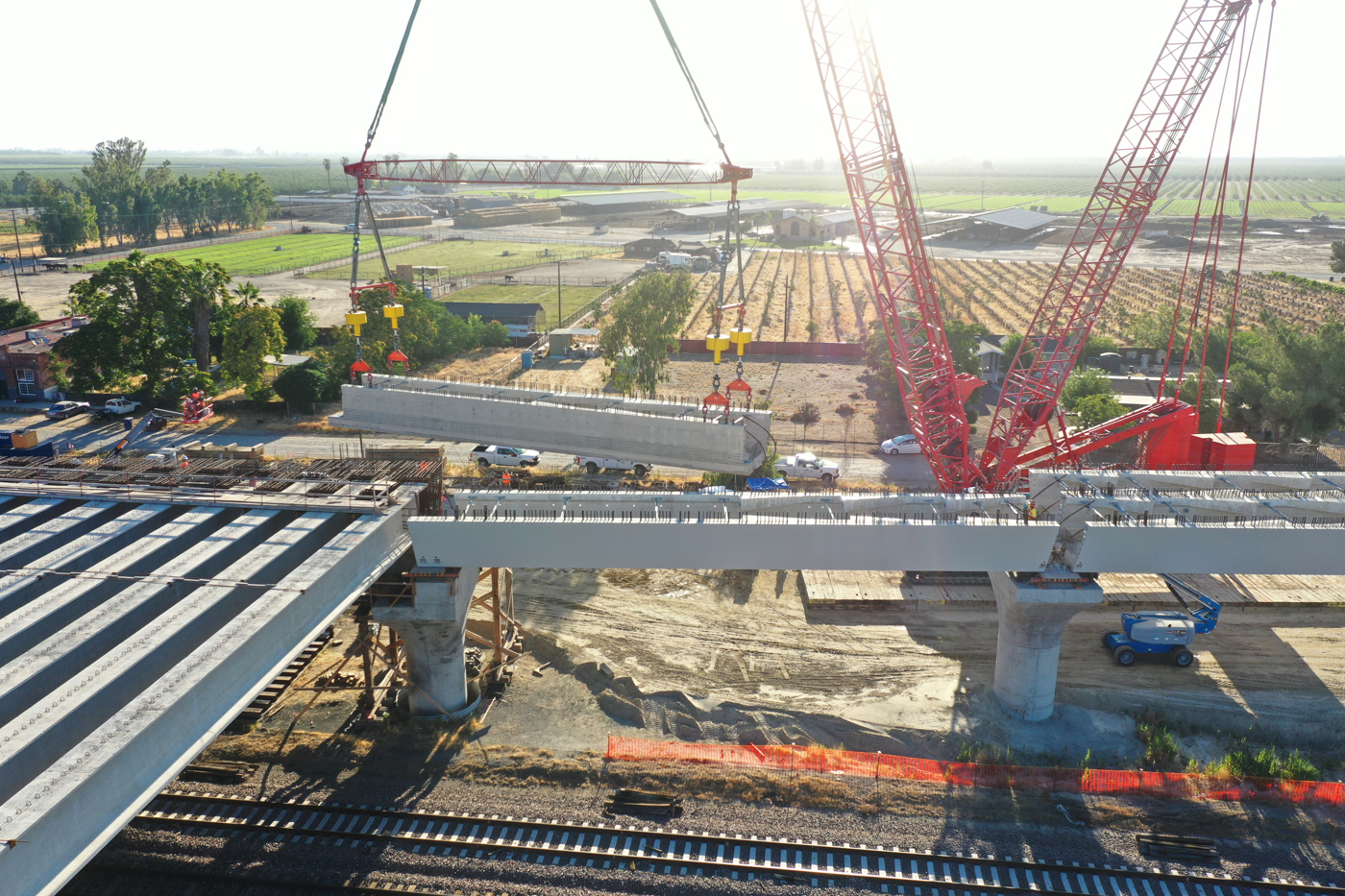
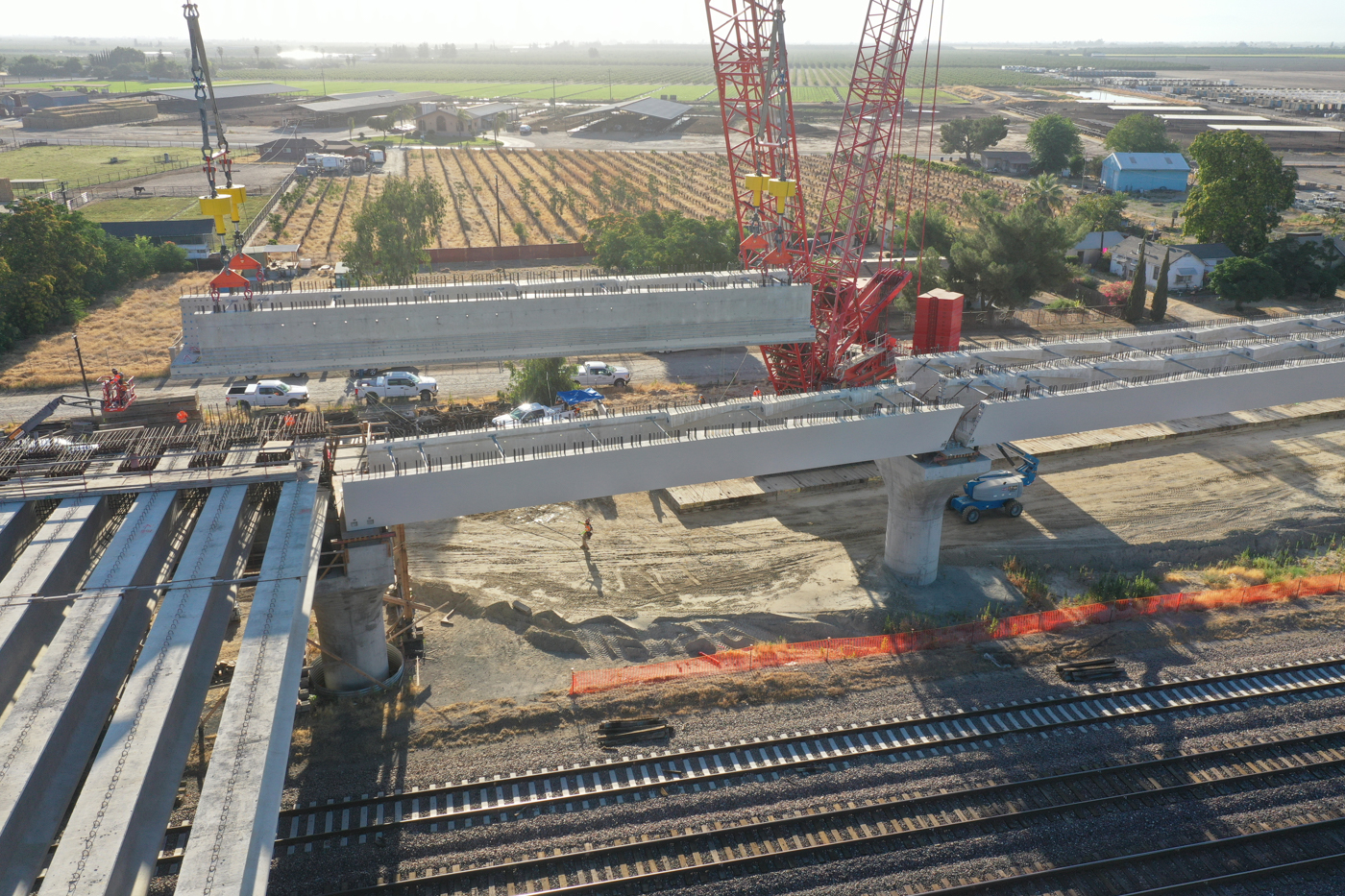
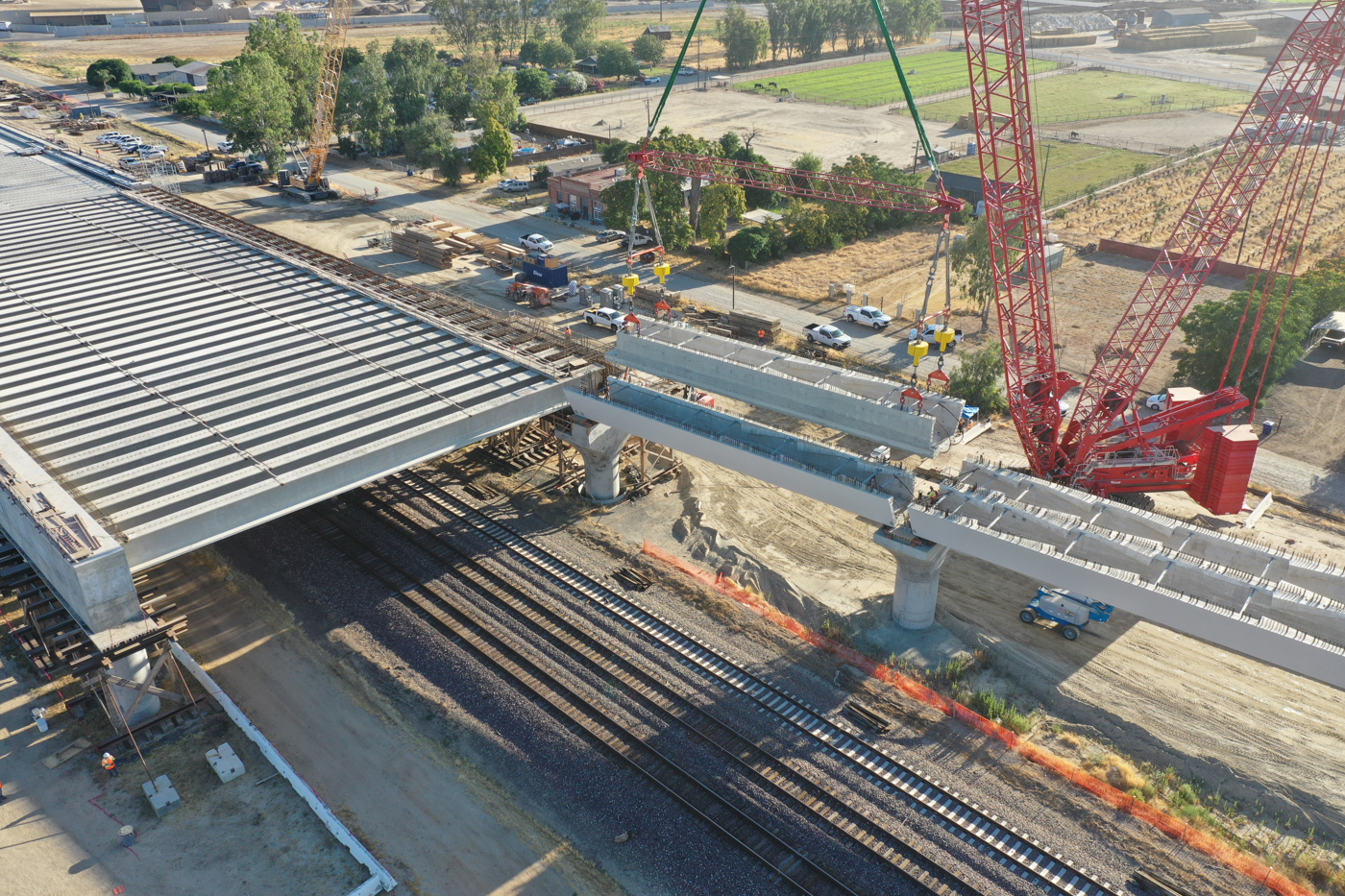
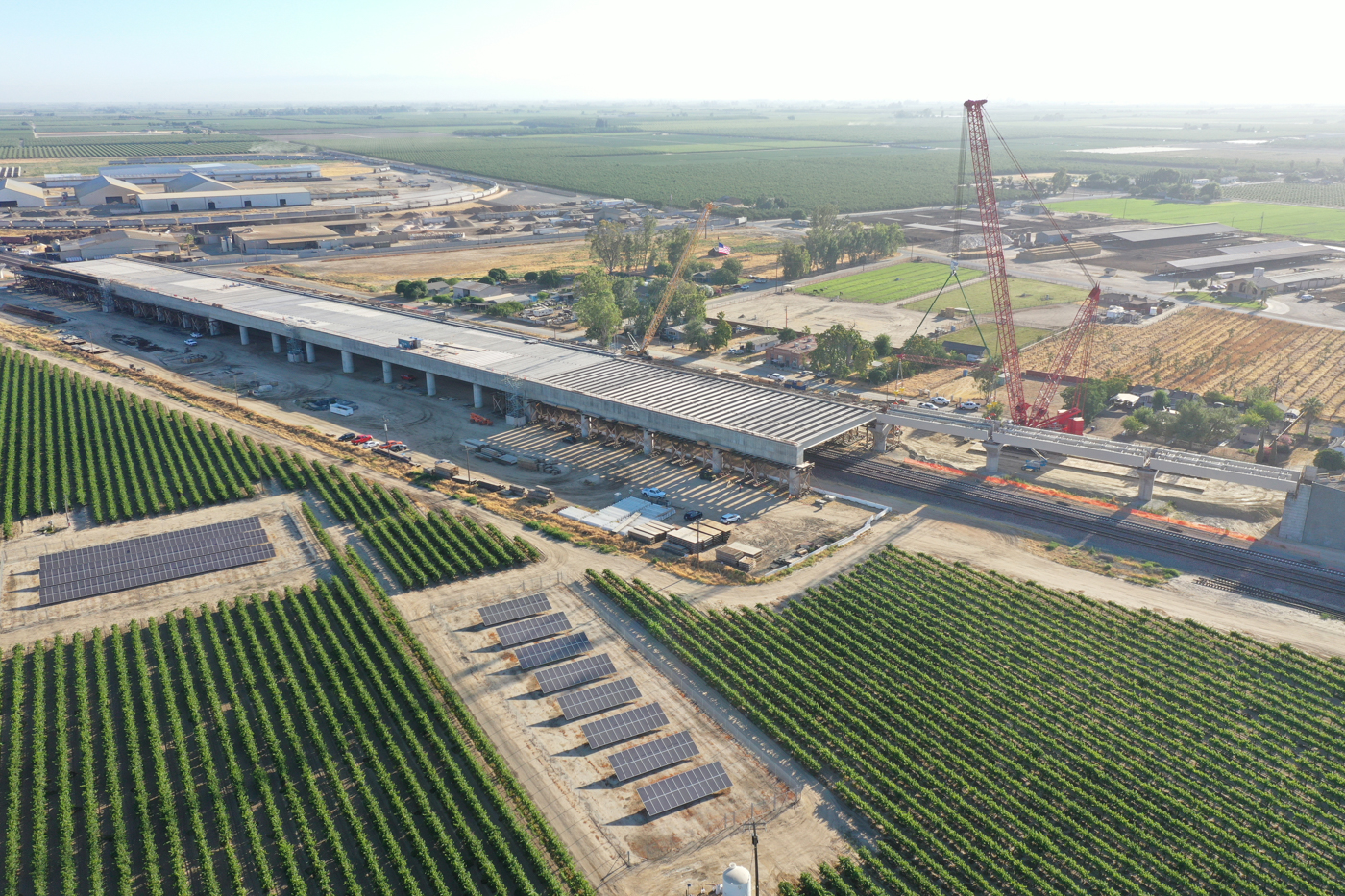
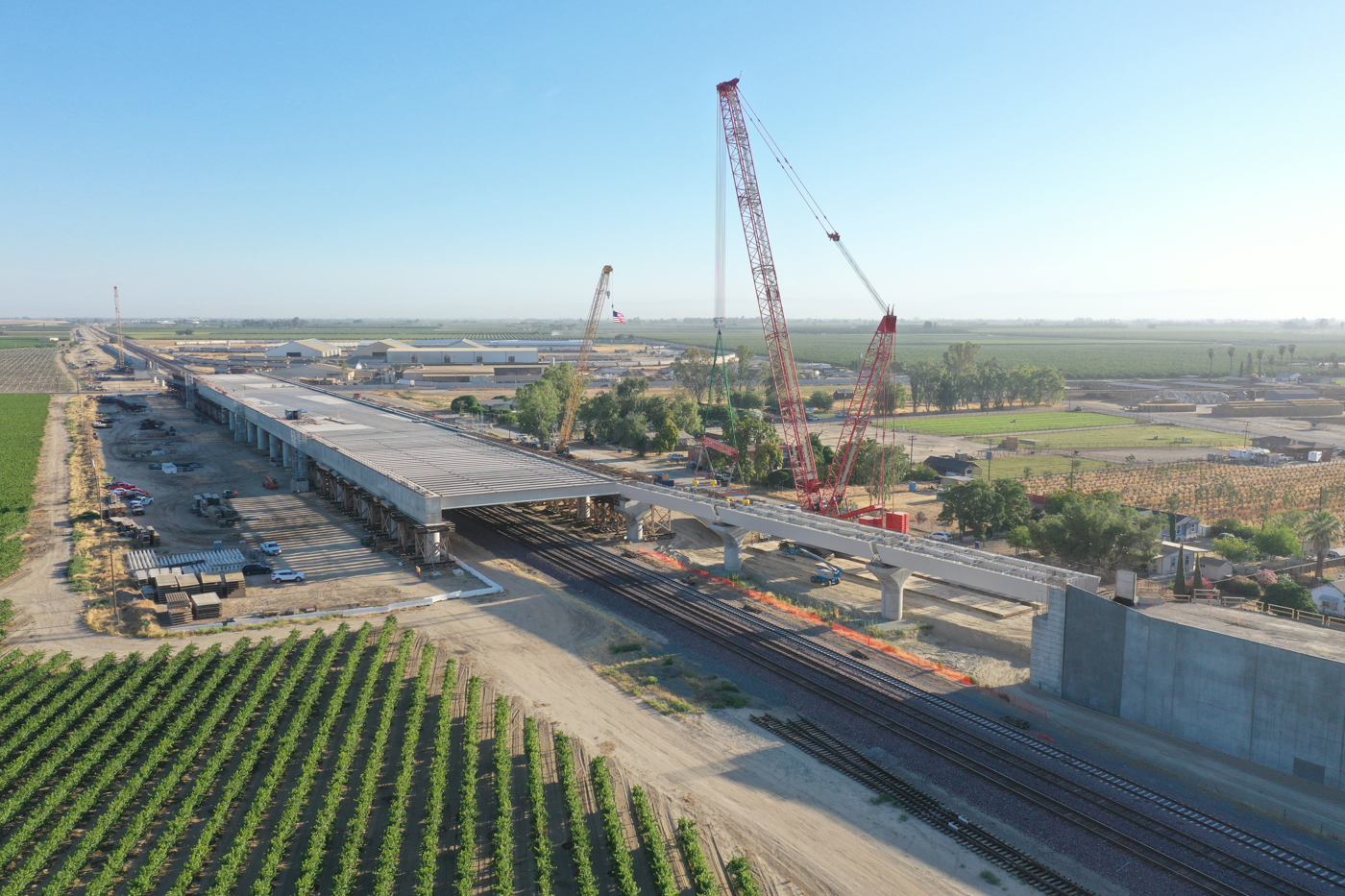
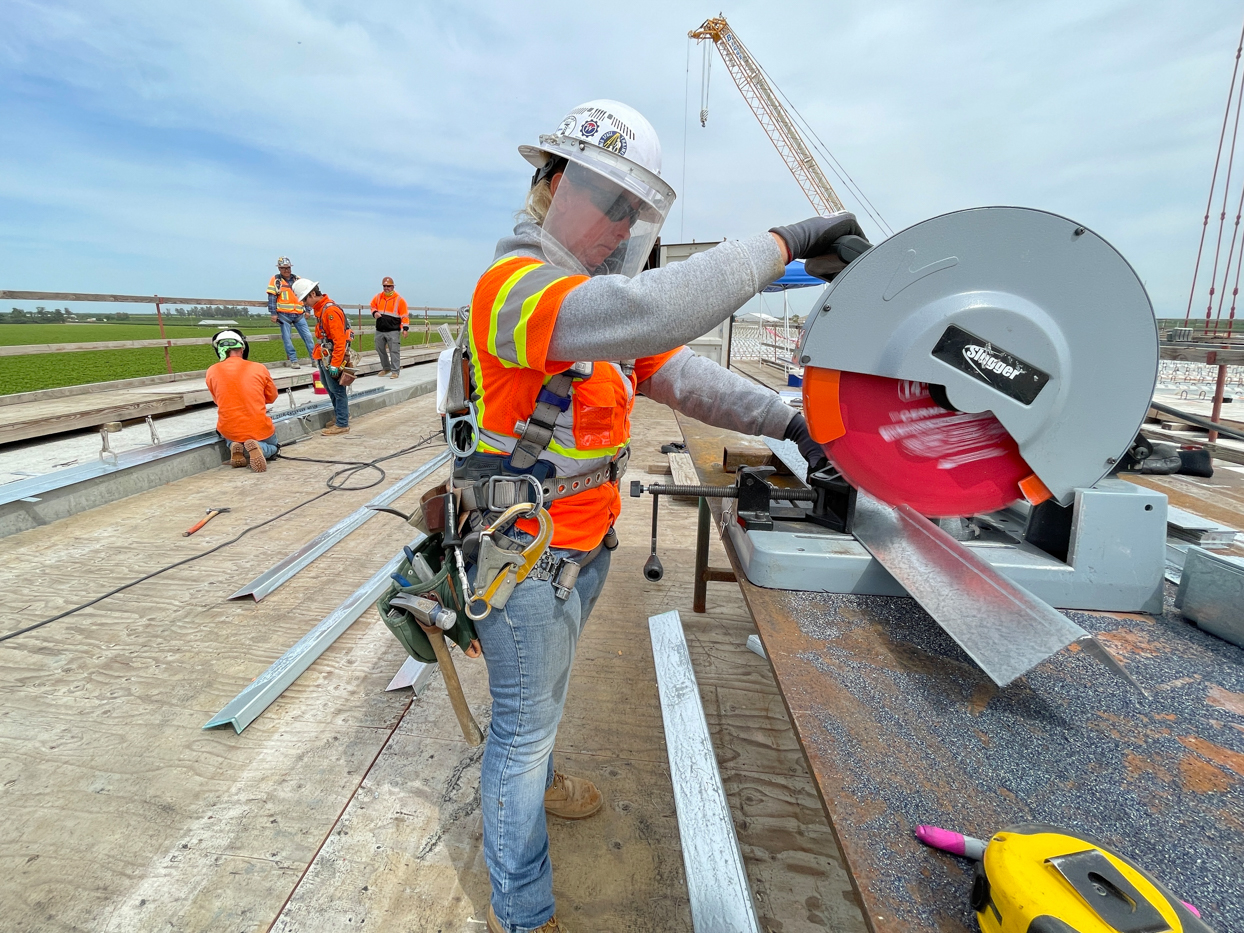
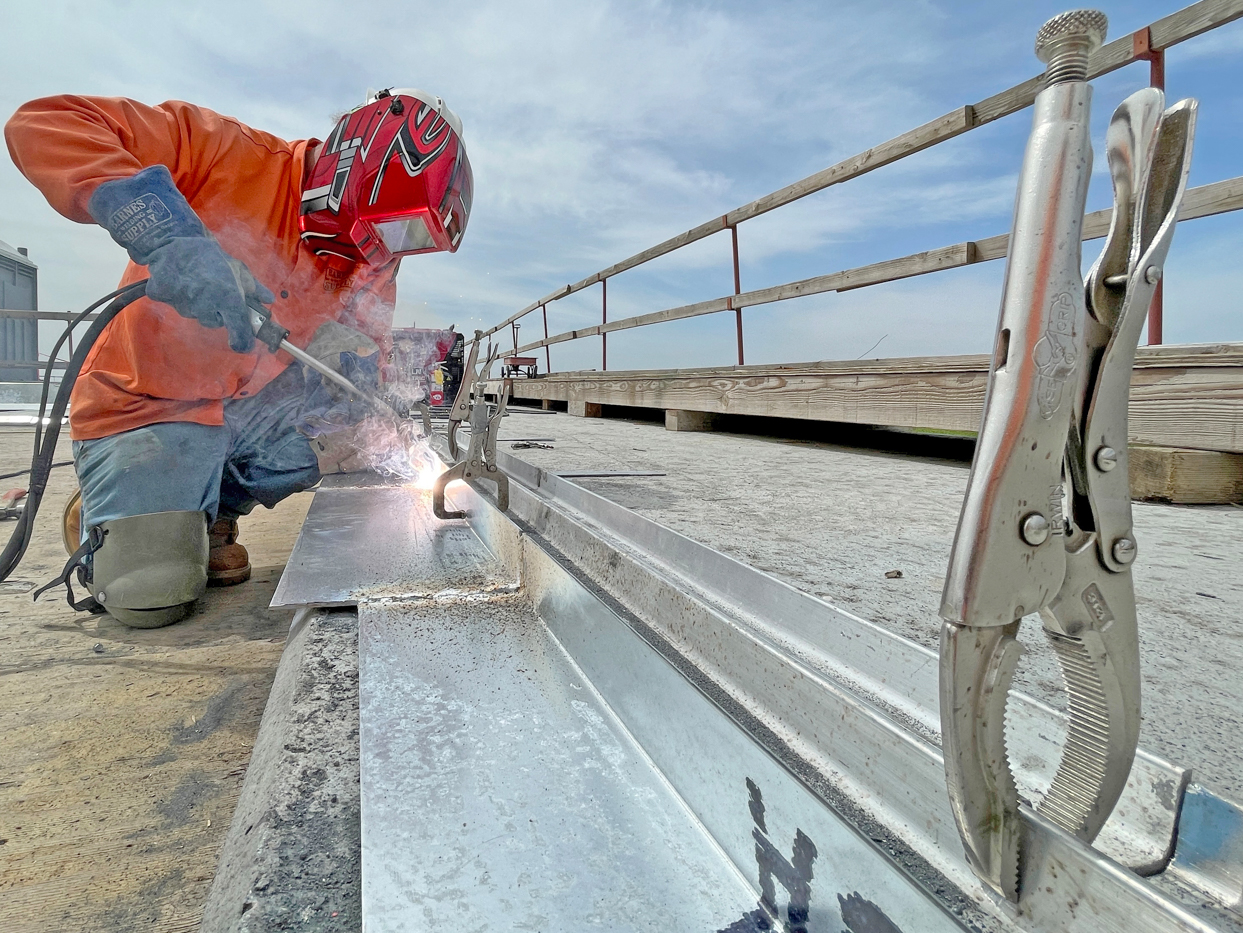
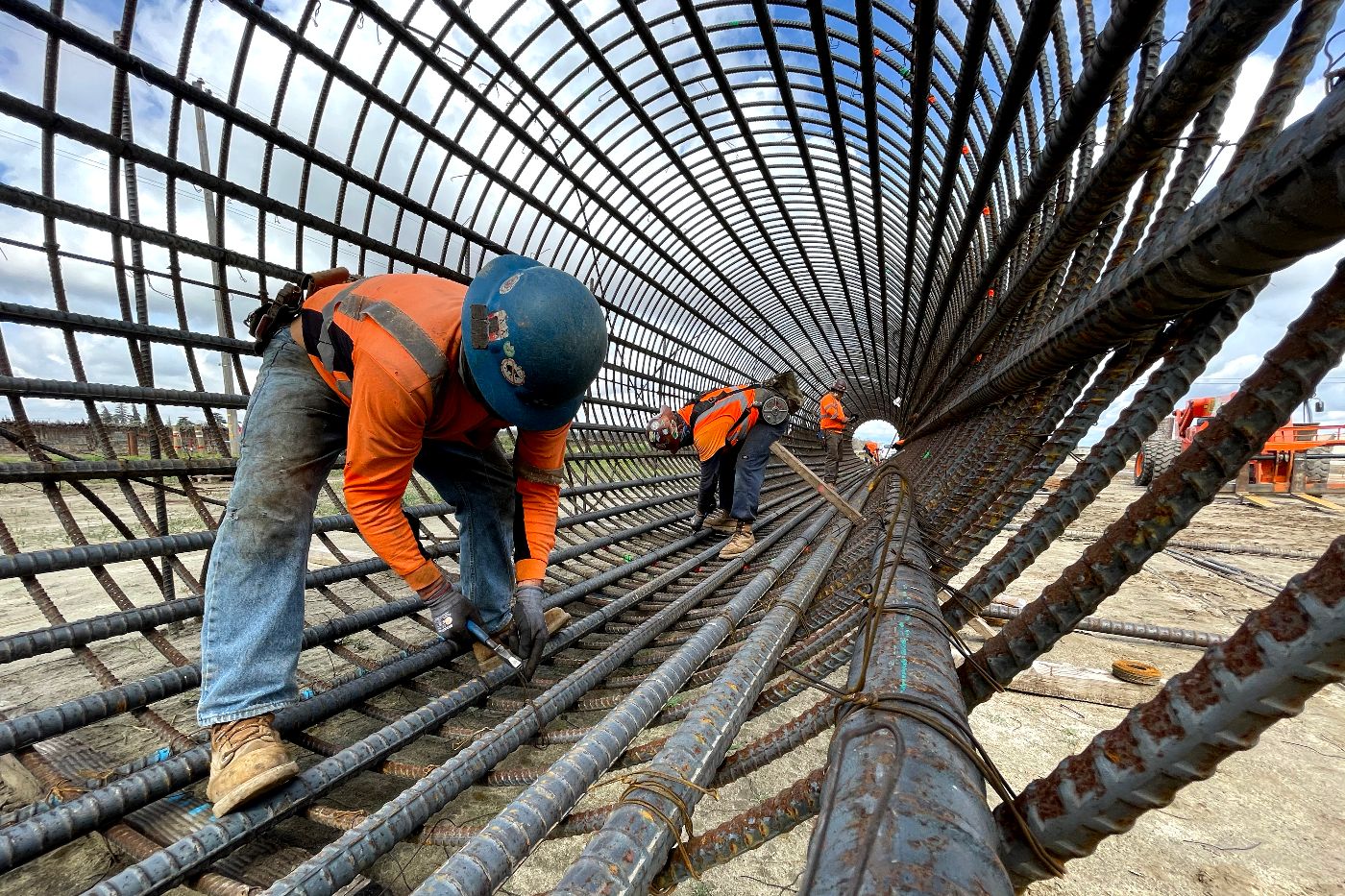
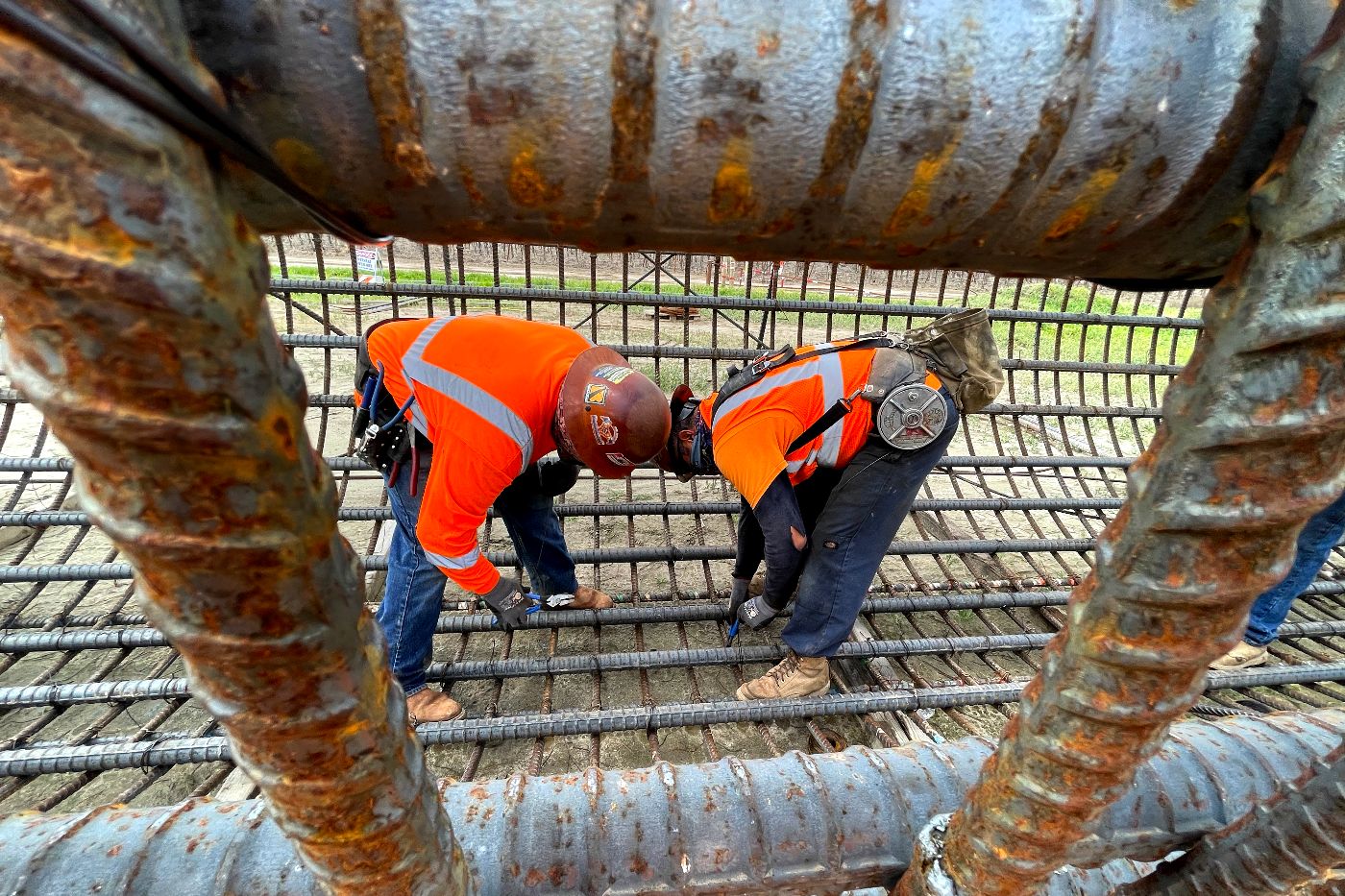
Updates Per Project
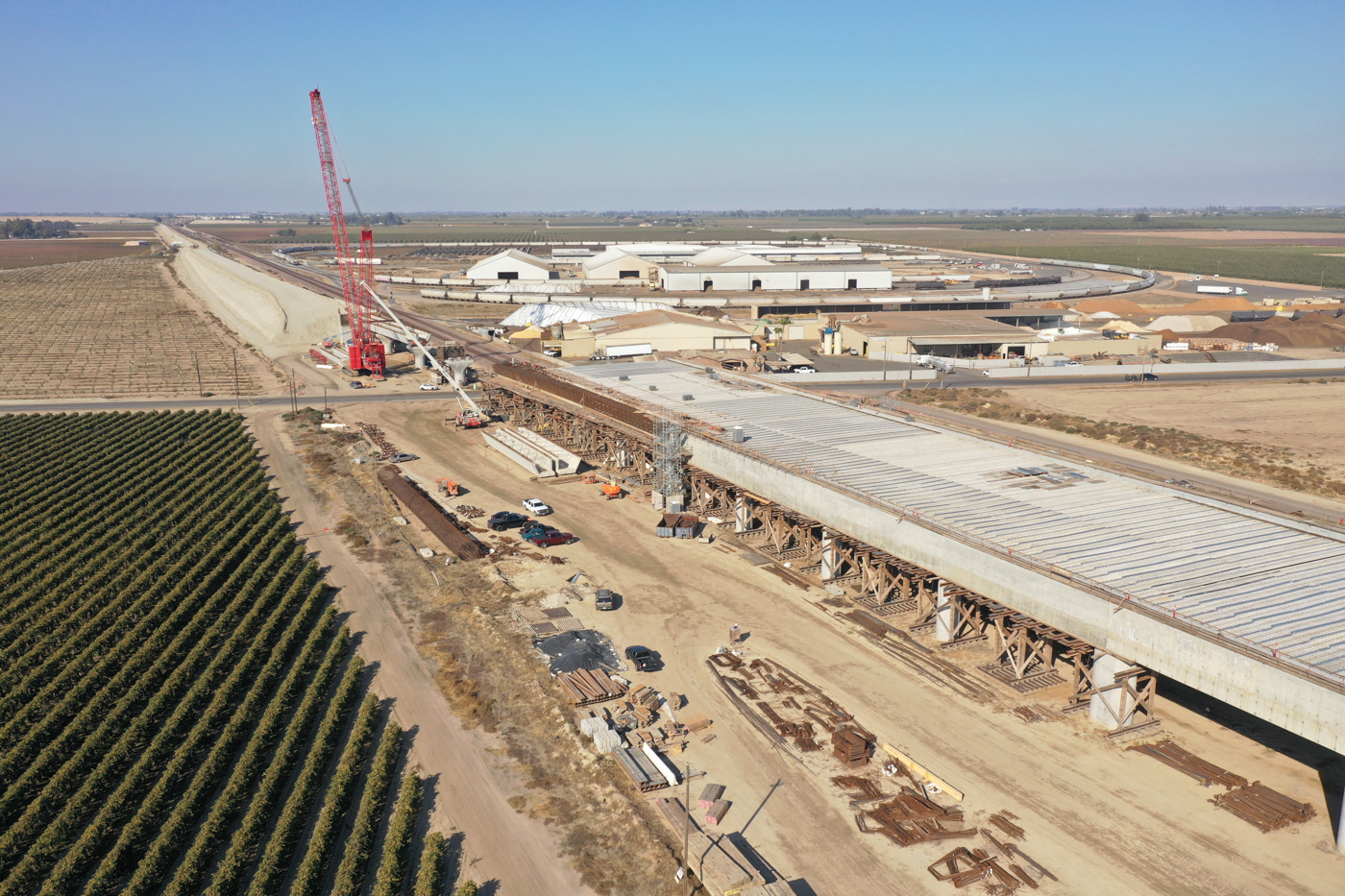
May 21, 2024
This summer, crews set the first tub girders in Construction Package 2-3 at the Conejo Viaduct. Unlike the typical California Wide Flange girders already set on the pergola section, tub girders form an enclosed tube with multiple walls and are placed between the abutments, columns and pergola. Two girders are needed on each section to have enough room for two sets of high-speed rail tracks to be set on top. In May, six pre-cast tub girders were set on the south side of the Conejo Viaduct. Another 12 will be needed for the north. All tub girders are being manufactured internally at the Dragados-Flatiron Joint Venture Pre-Cast Tub Girder Facility in Kings County.
Crews can also be seen working to form the remaining edge beams on the west s Scan Me ide of the pergola section.

May 20, 2024
The Conejo Viaduct in Fresno County continues to take shape. All tub girders on the north and south sides of the viaduct sections have been placed, all pre-cast and transported to the construction site by contractor Dragados-Flatiron Joint Venture. Across the pergola section, crews are installing stay-in-place metal decking formwork for concrete to be placed for the deck, the section high-speed trains will travel in the future. To date, more than 500 cubic yards of concrete have been placed on the deck of the pergola. More concrete will be placed throughout the spring and summer.
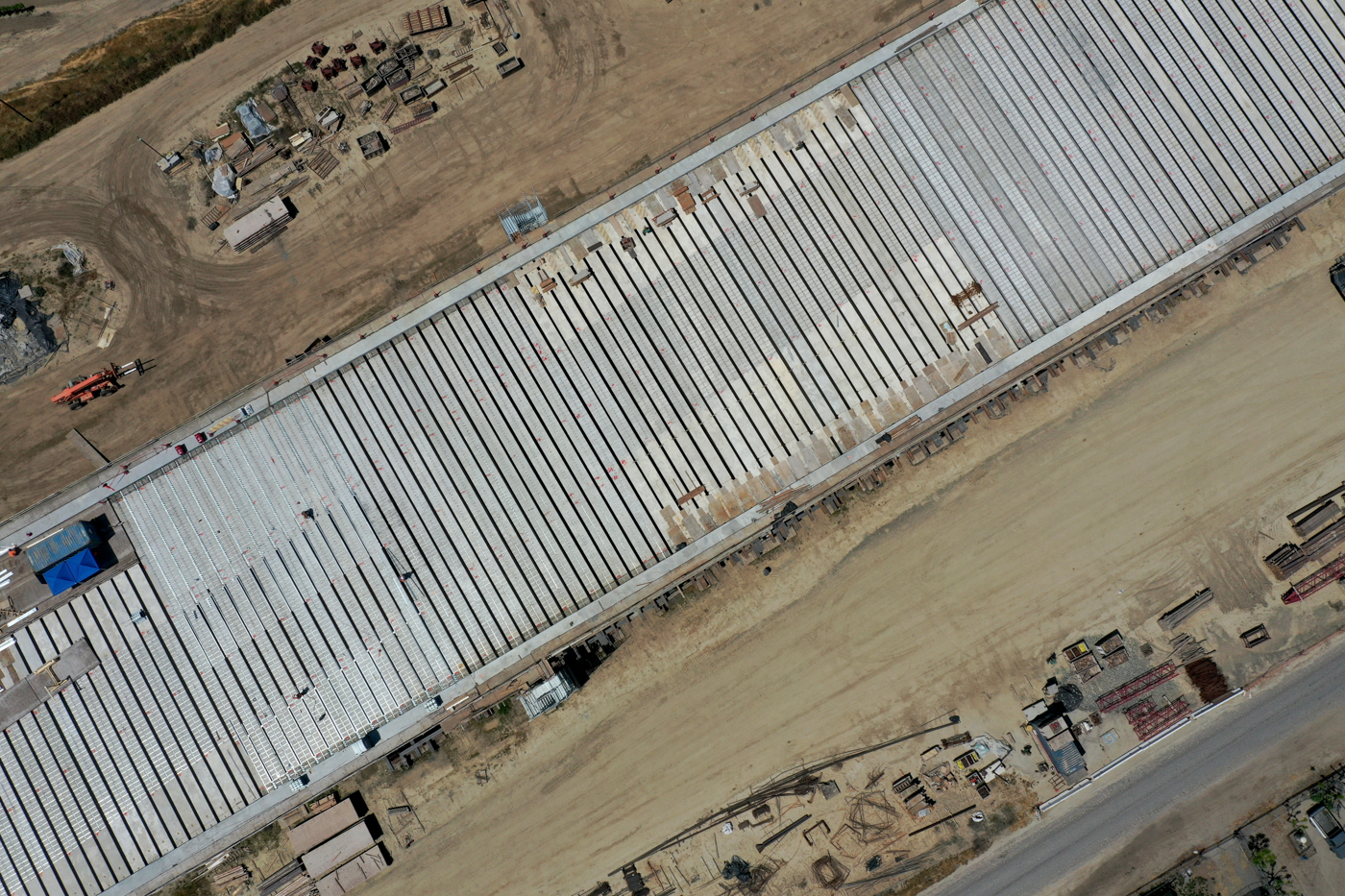
May 10, 2023
Earlier this year, the last two of the 248 pre-cast concrete girders were placed for the pergola section of the Conejo Viaduct. Ironworkers and carpenters are now working on the upper edge beams of the structure, the portion of the structure that provides support and ties the pre-cast concrete girders together. To date, more than 9,000 cubic-yards of concrete have been placed to form the edge beams for the structure, with another 1,400 cubic-yards still needing to be placed.
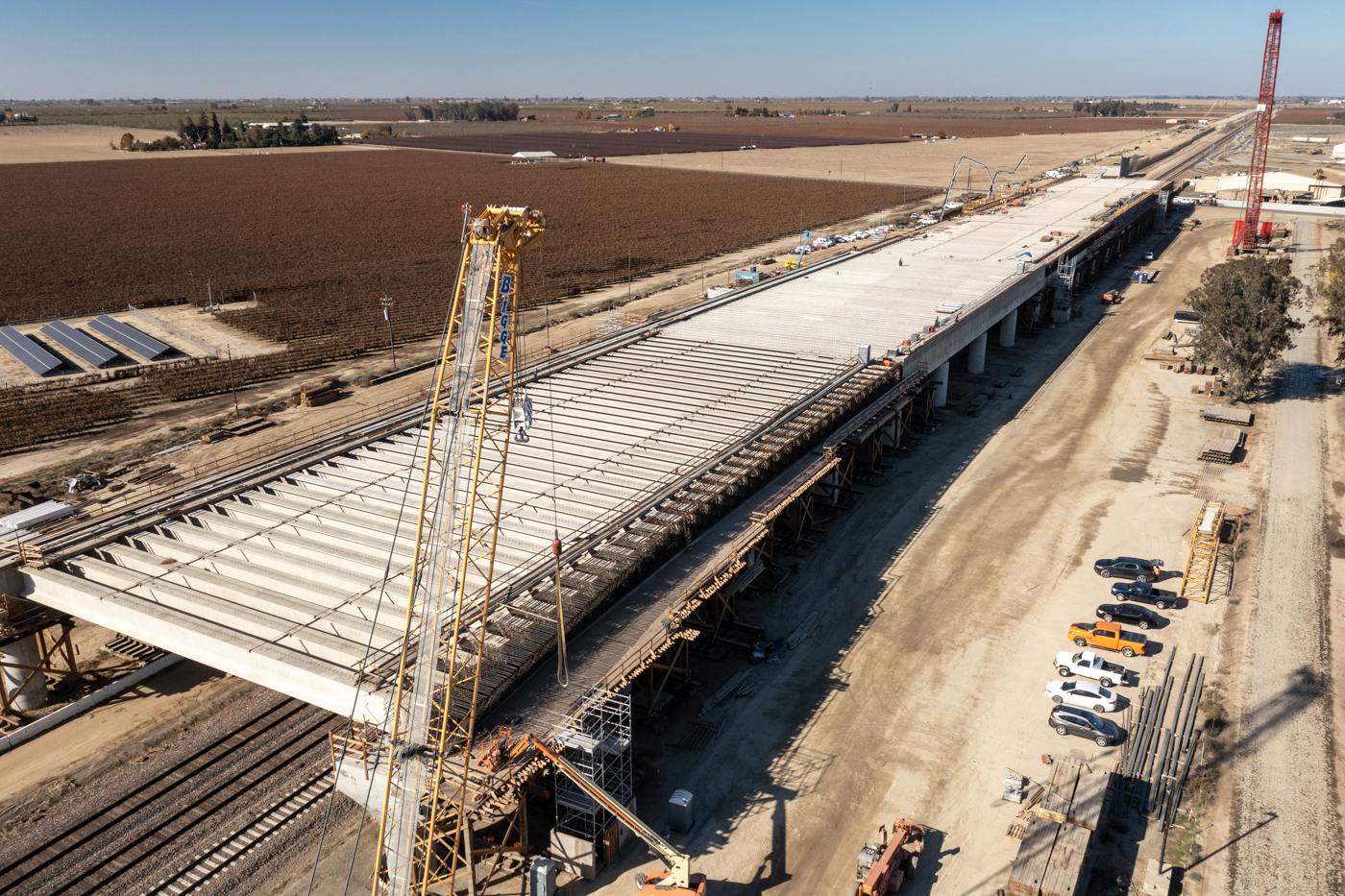
November 1, 2022
Throughout the spring and summer, crews have placed 246 of the needed 248 pre-cast concrete girders for the pergola section of the Conejo Viaduct. To the south of the pergola, crews have tied rebar and placed concrete to form portions of an intrusion protection barrier – or IPB wall – that will allow high-speed trains to travel safely in the proximity of the BNSF railroad tracks.
More than 12,000 cubic yards of concrete have been placed to date to form the IPB wall that spans more than 3,400 feet wide, 40 feet tall, and up to five feet thick. When complete, it will help provide added safety between the high-speed rail and freight rail lines.
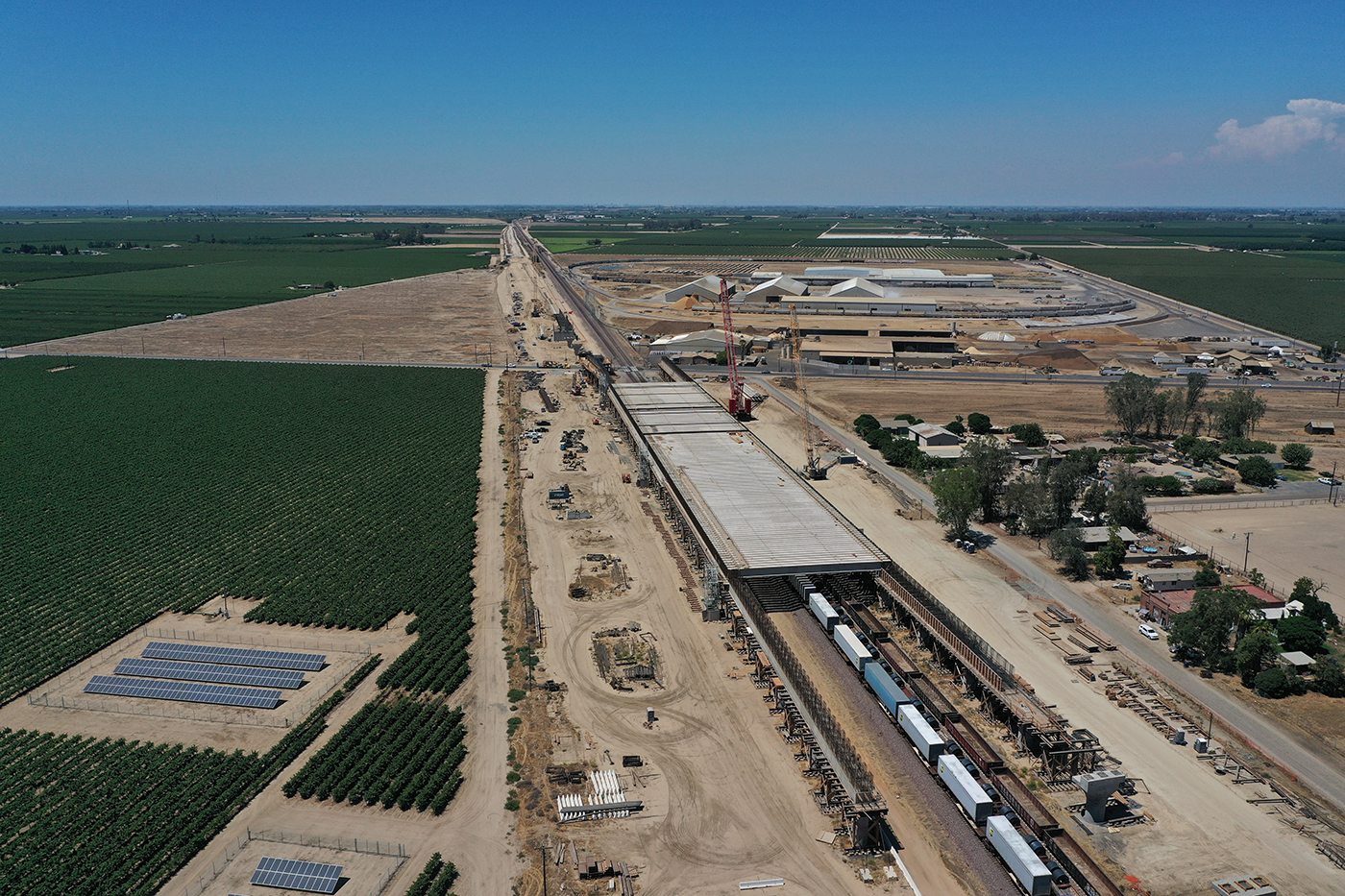
June 1, 2022
As of June 2022, crews have installed 156 of the needed 248 girders to form the pergola section of the Conejo Viaduct. Each girder spans nearly 124 feet long and weighs more than 159,000 lbs. To the south, crews have begun working on an intrusion protection barrier (IPB) wall between the Conejo Viaduct and the Peach Avenue structure. Crews have placed concrete to form the foundation, also known as the footings of the IPB wall and crews are now tying rebar for the wall and placing concrete for the wall itself. The wall will help improve safety when in operation, separate the high-speed rail alignment from the BNSF rail lines, and will help mitigate potential hazards.
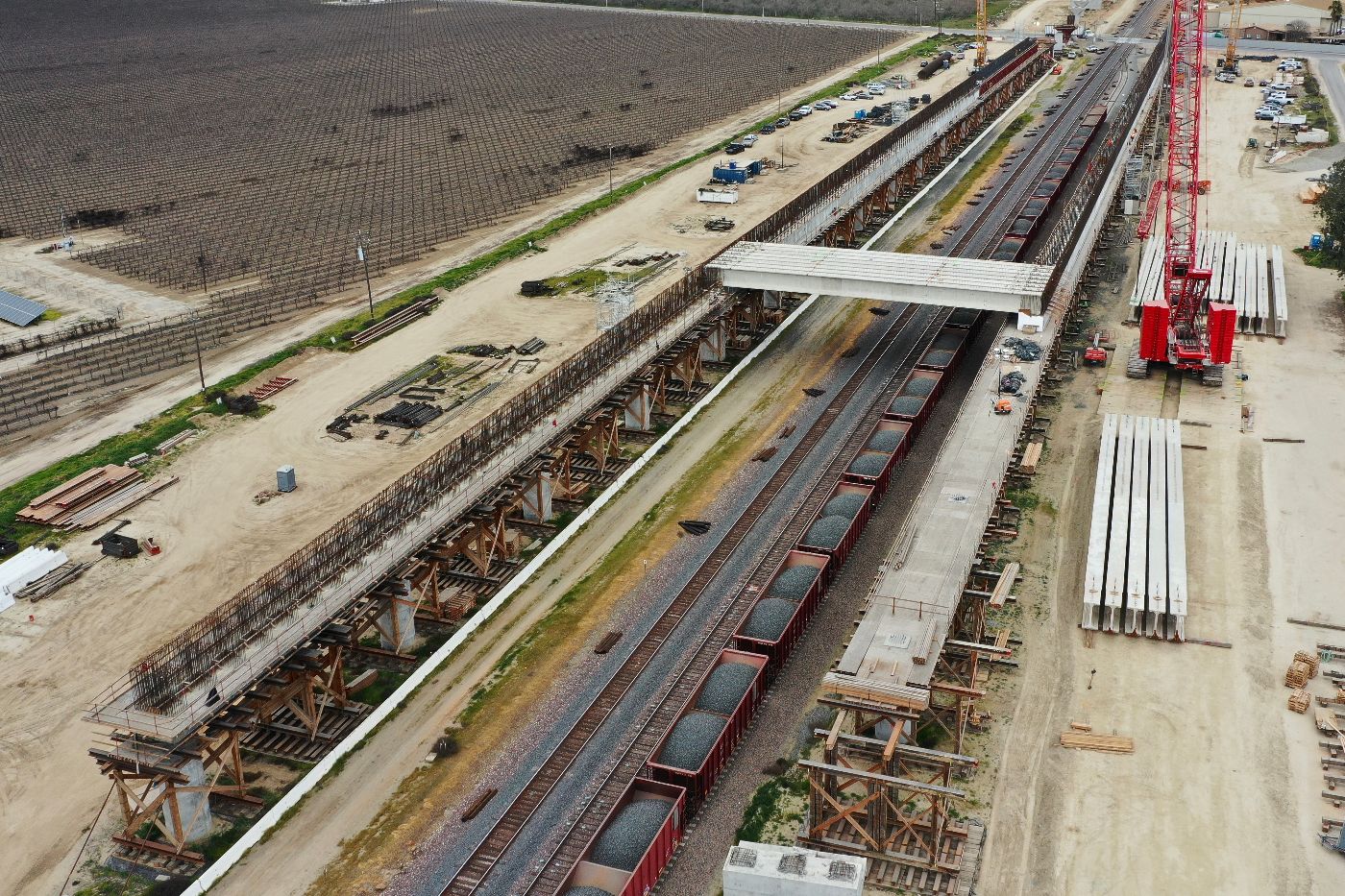
March 1, 2022
Crews are working late nights and on weekends to install 248 pre-cast concrete girders needed for the pergola section of the Conejo Viaduct. As of March 1, crews have installed 33 girders that span nearly 124-feet long and weigh more than 150,000 lbs. each.
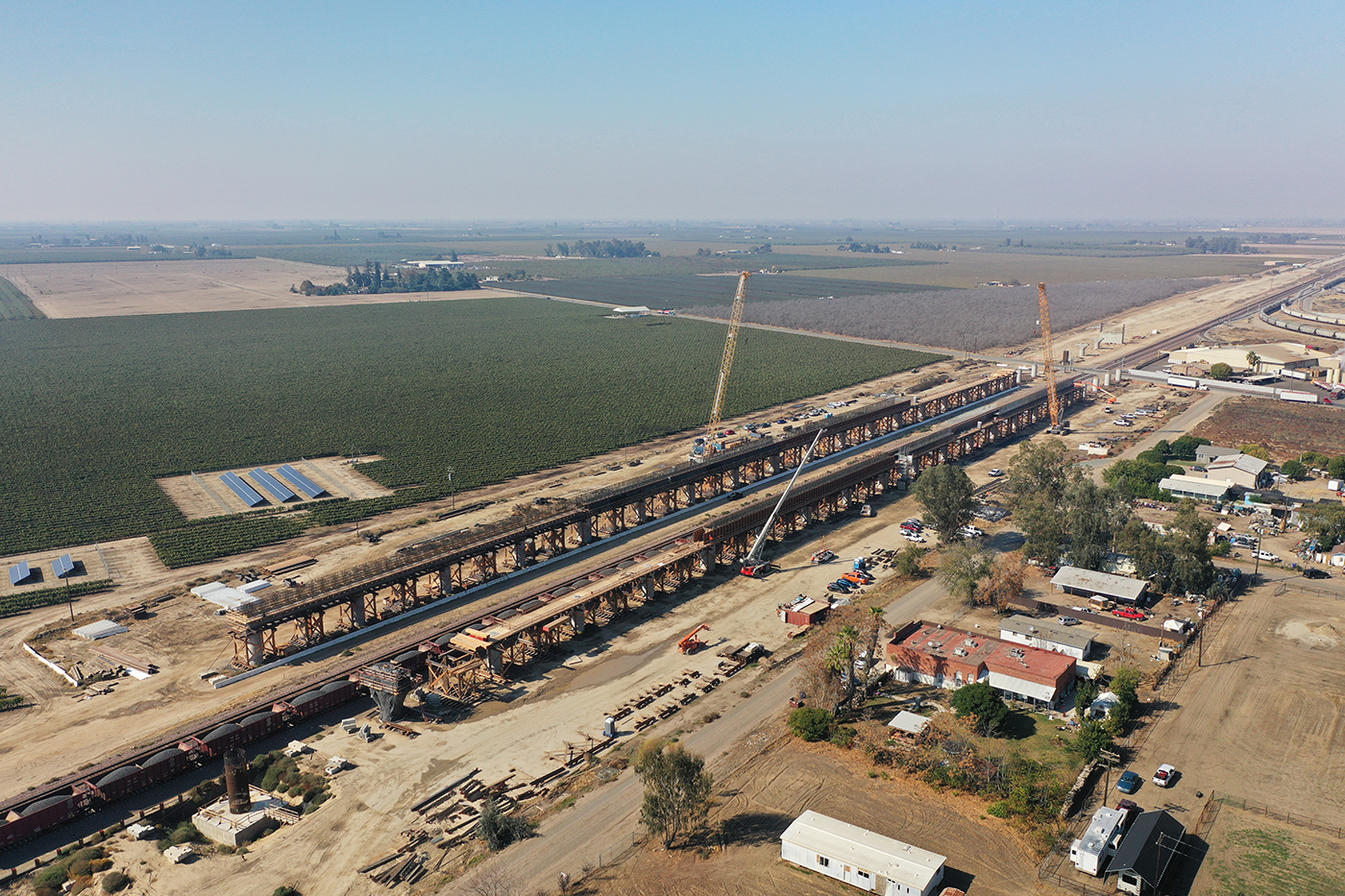
November 1, 2021
At the Conejo Viaduct, crews continue to work on the edge beams of the pergola structure. To the south of the future pergola, the forms have already been stripped for the edge beams. Traveling north, crews continue to place concrete to form the edge beams. More than 1,000 cubic yards have been placed to date.
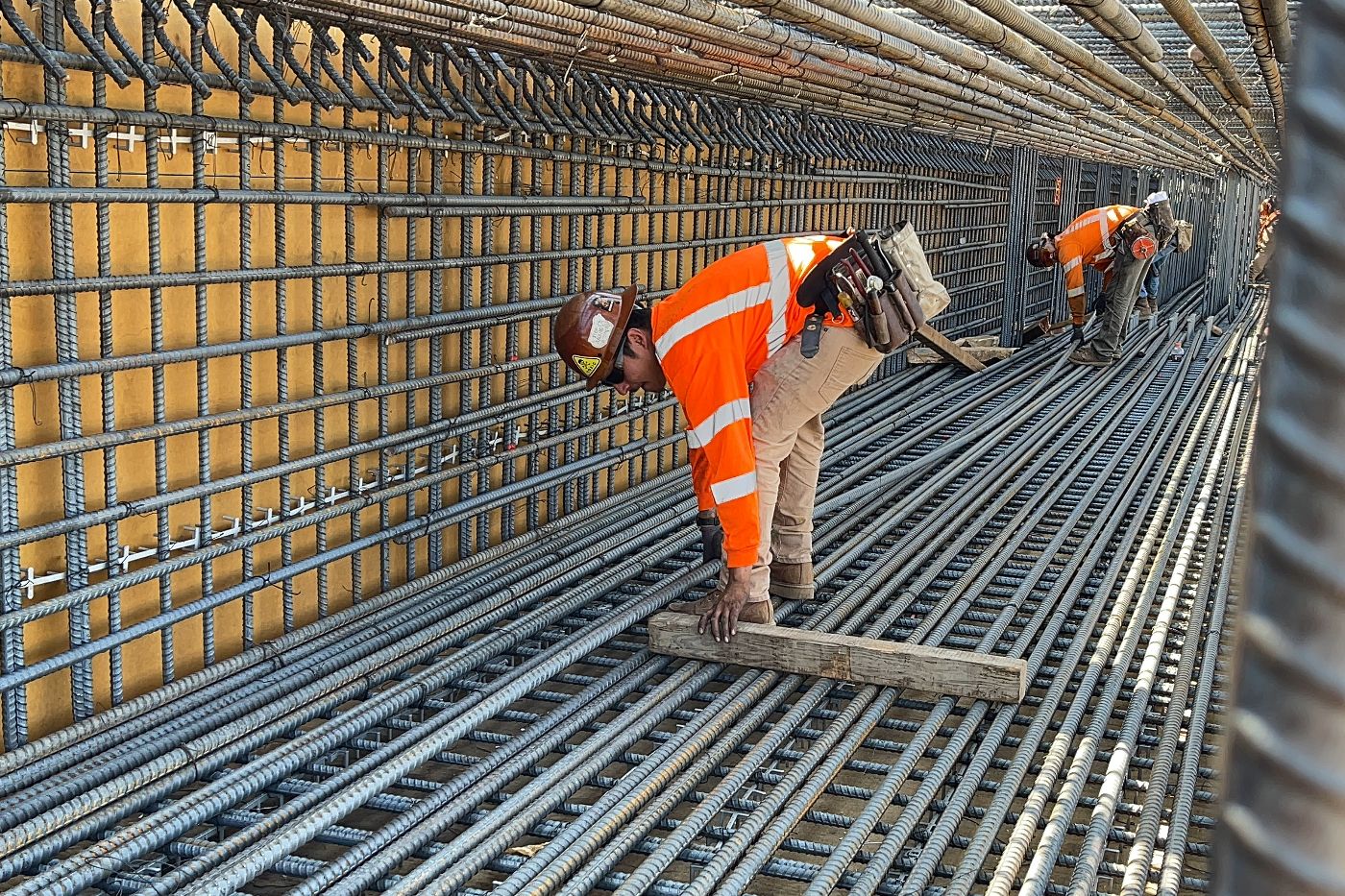
August 1, 2021
At the Conejo Viaduct in Fresno County, crews are installing falsework for the edge beams of the superstructure, the portion of the structure that will carry high-speed trains over the BNSF tracks. To the south, ironworkers can be seen tying rebar for the lower edge beams where falsework has been installed. Ironworkers will continue to move north as falsework is installed.
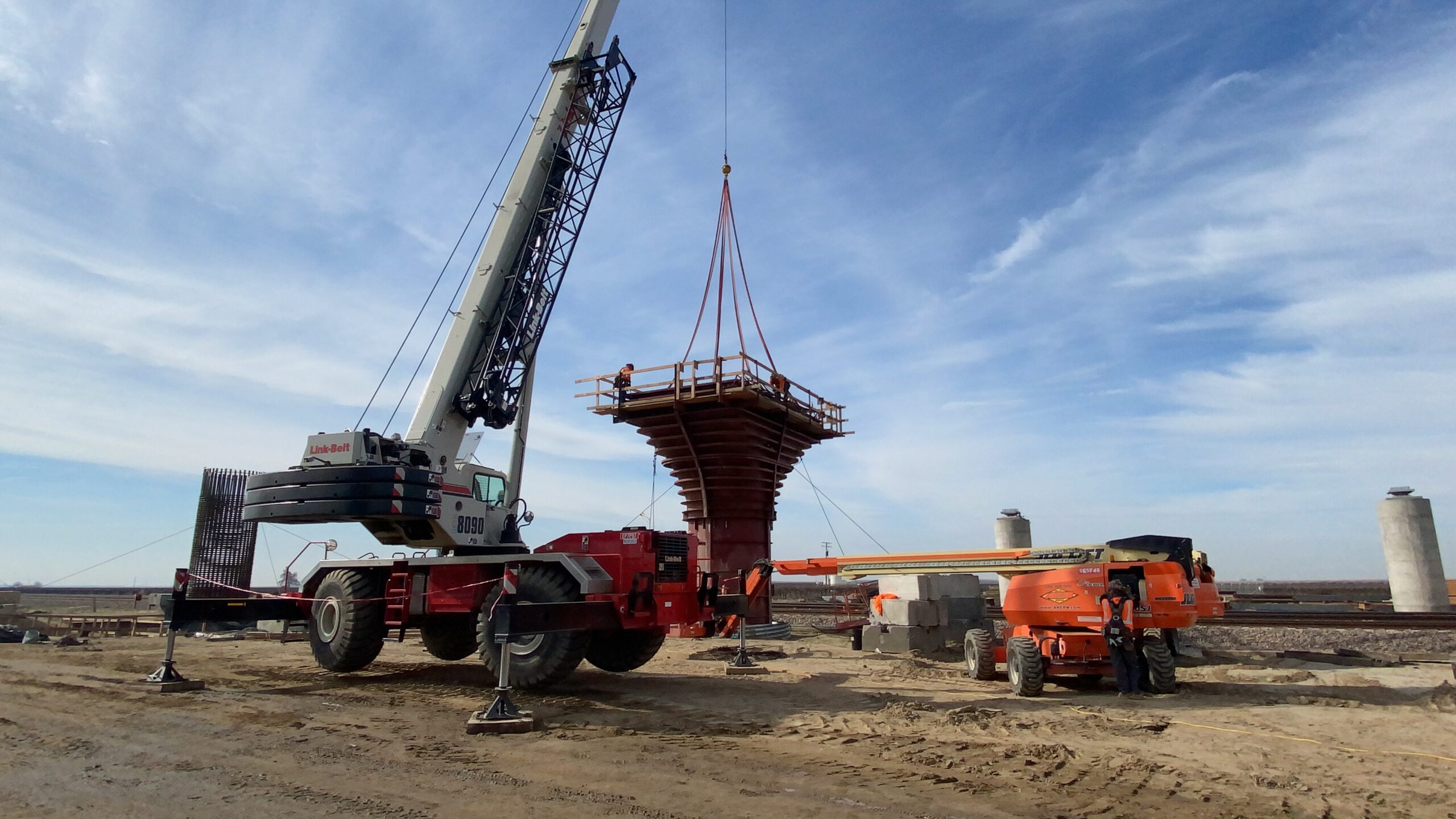
March 1, 2021
At the northern portion of the Conejo Viaduct in Fresno County, crews continue to place concrete to form the bents and columns of the substructure. To the south, crews continue to erect the column flares, the portion of the column that supports the superstructure. When complete, the 2,000-foot Conejo Viaduct will carry high-speed trains over the BNSF rail line, Conejo and Peach avenues.
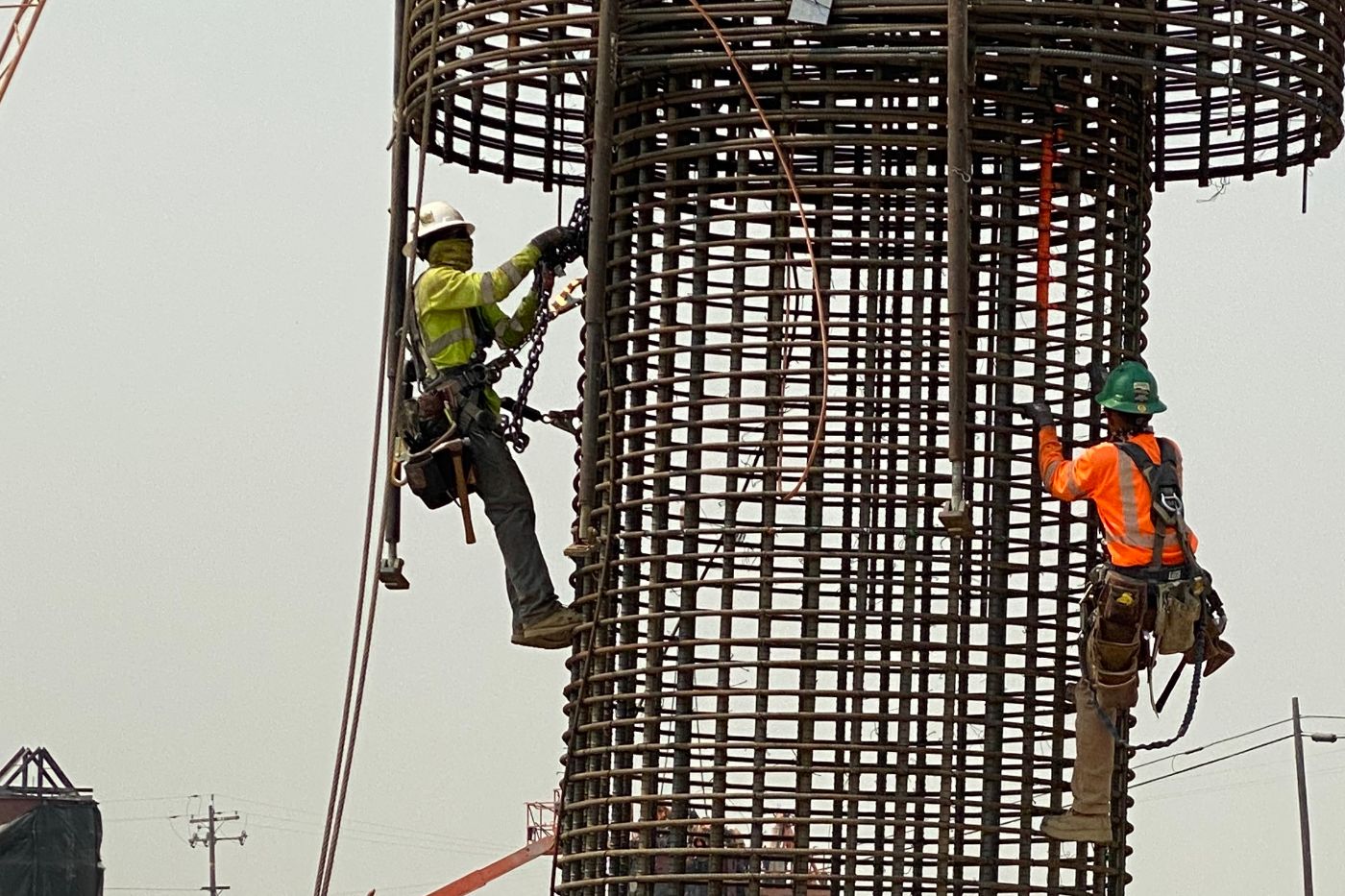
September 28, 2020
This month, ironworkers at the Conejo Viaduct continue to assemble rebar cages that will be used to form the columns of the viaduct. The rebar cages are then lifted and placed in cast-in-drilled-holes (CIDH) bents to provide future support of the structure. On the east side of the BNSF railroad, 26 columns will be needed for the structure.
On the west side of the BNSF tracks, 18 of the 24 columns have been erected. Crews are now working on pouring concrete to form the column flares, the portion of the column that supports the structure. All column rebar cages should be fabricated and placed in the coming weeks.